
University of Mosul
Engineering College
Mechatronics Engineering Departments
Lecture Notes
Fluid Mechanics
2
nd
Grade Students
Dr. Ammar Hazim Saber
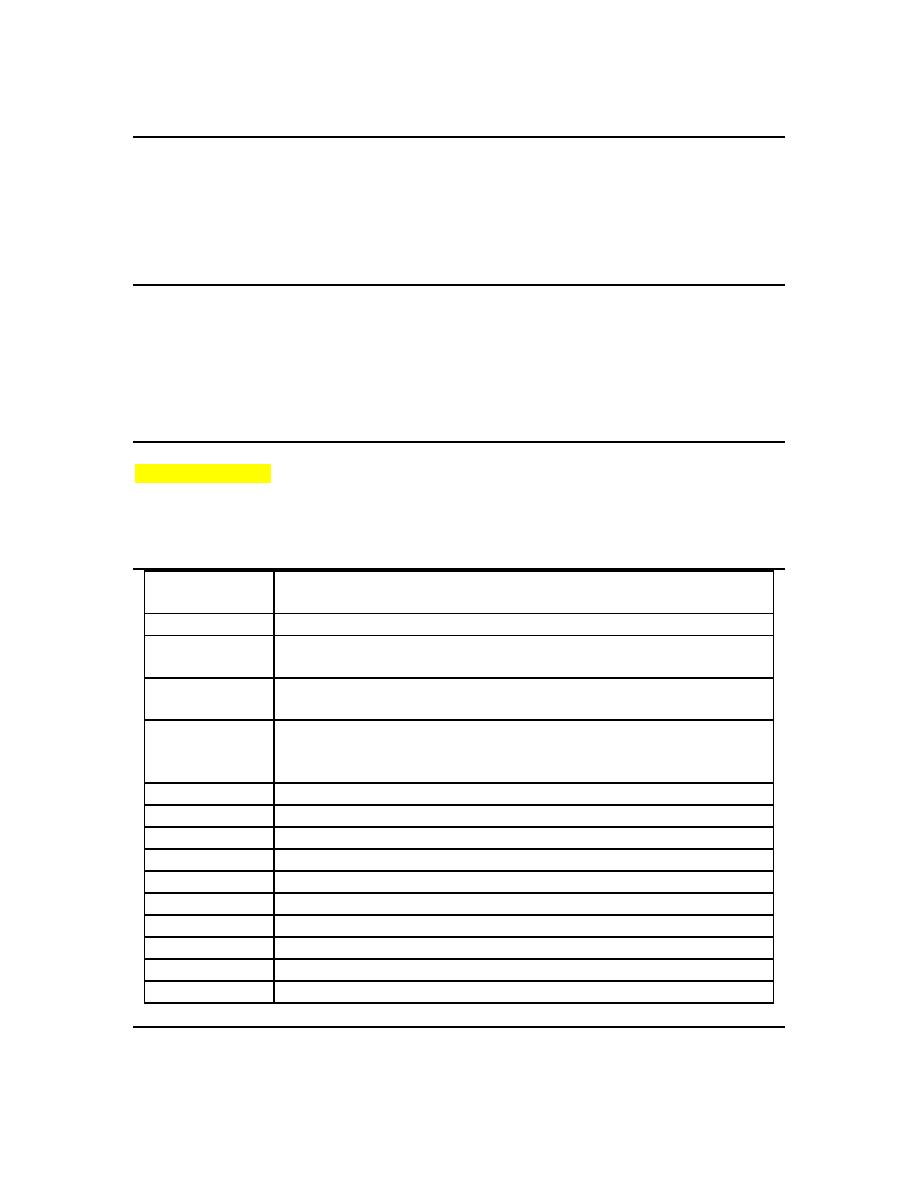
Page 2
Course Syllabus
Course Information
Mechatronics Engineering Department
Fluid Mechanics –2016
Room: Will be announced later
Time:
Lecturer Contact Information
Dr. Ammar Hazim Saber AlAnaz
Office:
Phone:
Email: ammar.hazim78 @ gmail.com
Office Hours: please use email to set this up
Course Description
Fluid Mechanics (5 hours lecture per week) Lecture course. Course material includes an
introduction to the concepts and applications of fluid mechanics and dimensional analysis with an
emphasis on fluid behavior
Lecture
(Hrs, approx.)
Topic
Introduction: Fluid concepts, Dimensions and units
Fluid properties : Viscosity, Kinematic viscosity, surface tension,
capillary
Statics: Hydrostatic pressure, Manometry / pressure measurement,
Hydrostatic forces on submerged surfaces
Dynamics: The continuity equation, The Bernoulli Equation,
Applications of the Bernoulli equation, The momentum equation,
Application of the momentum equation.
Introduction to dimensional analysis: Dimensions, Similarity

Page 3
Required Textbooks and Materials
Most homework will come from the 1
st
book
1. Fluid Mechanics 4
th
Edition
Frank M. White, MCGraw-Hill
2. Introduction to Fluid Mechanics 7
th
Edition
R.W. Fox, P.J. Pritchard and A.T. McDonald
John Wiley, New York, 2009, ISBN: 970-471742999
3. Fluid Mechanics 5
th
Edition
Pijush K. Kundu, Ira M. Cohen and David R. Dowling
ISBN: 978-0-12-382100-3
Suggested Course Materials
1. http://nptel.ac.in/
2. www.learnerstv.com
3. http://www.mne.psu.edu/cimbala/Learning/Fluid/fluid.htm
4. http://www.efluids.com/efluids/pages/edu_tools.htm
5. http://www.et.byu.edu/~dol4/che374/lectureNotes/lectureNotes.html
6.
These descriptions are subject to change at the discretion of the Lecturer.
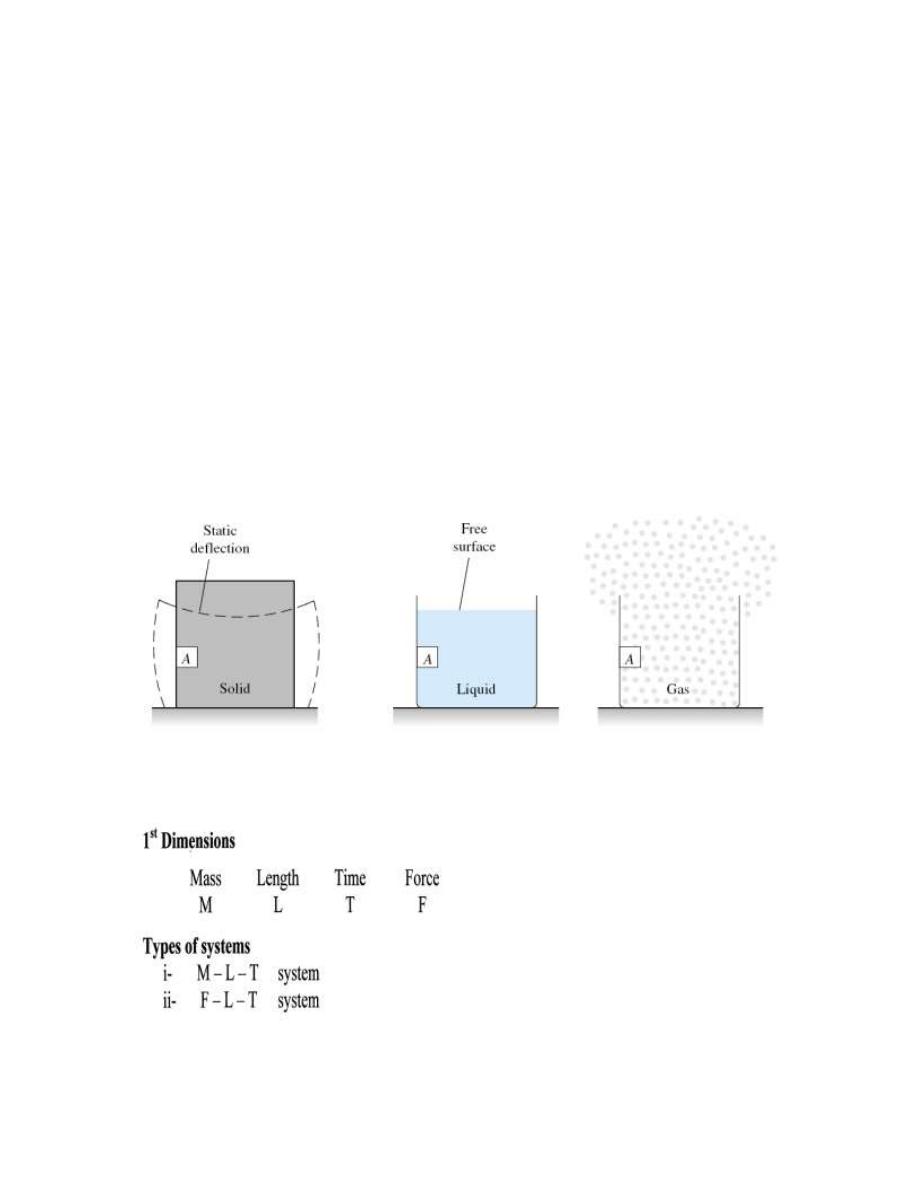
Page 4
Introduction
Fluid concept
•
Fluid mechanics
is a division in applied mechanics related to the behavior
of
liquid
or
gas
which is either in rest or in motion.
•
The study related to a fluid in rest or stationary is referred to
fluid static
,
otherwise it is referred to as fluid dynamic.
•
Fluid
can be defined as
a substance which can deform continuously when
being subjected to shear stress at any magnitude
. In other words, it can flow
continuously as a result of shearing action. This includes any liquid or gas.
•
Thus, with exception to solids, any other matters can be categorized as fluid.
•
Examples of typical fluid used in engineering applications are
water
,
oil
and
air
.
Units and Dimensions
Where Force F = mass * acceleration
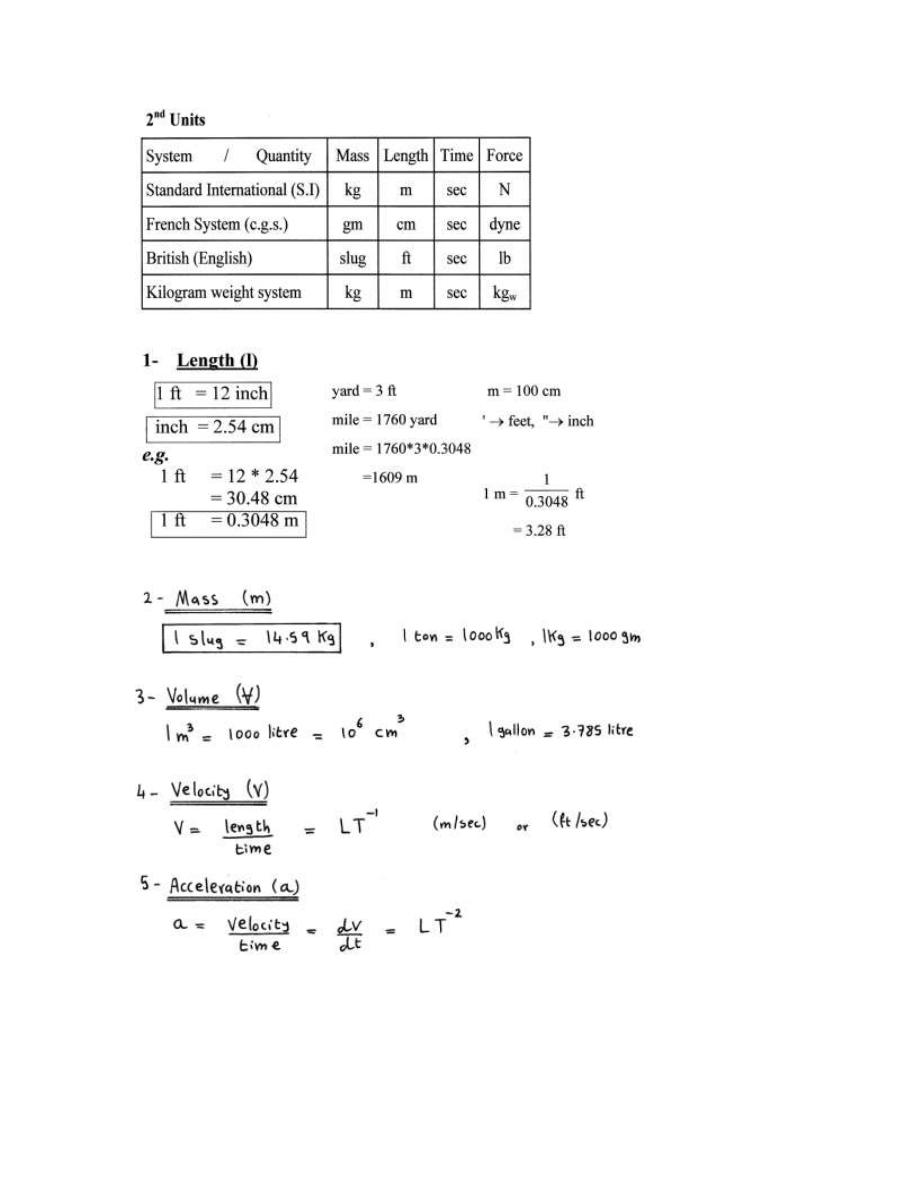
Page 5
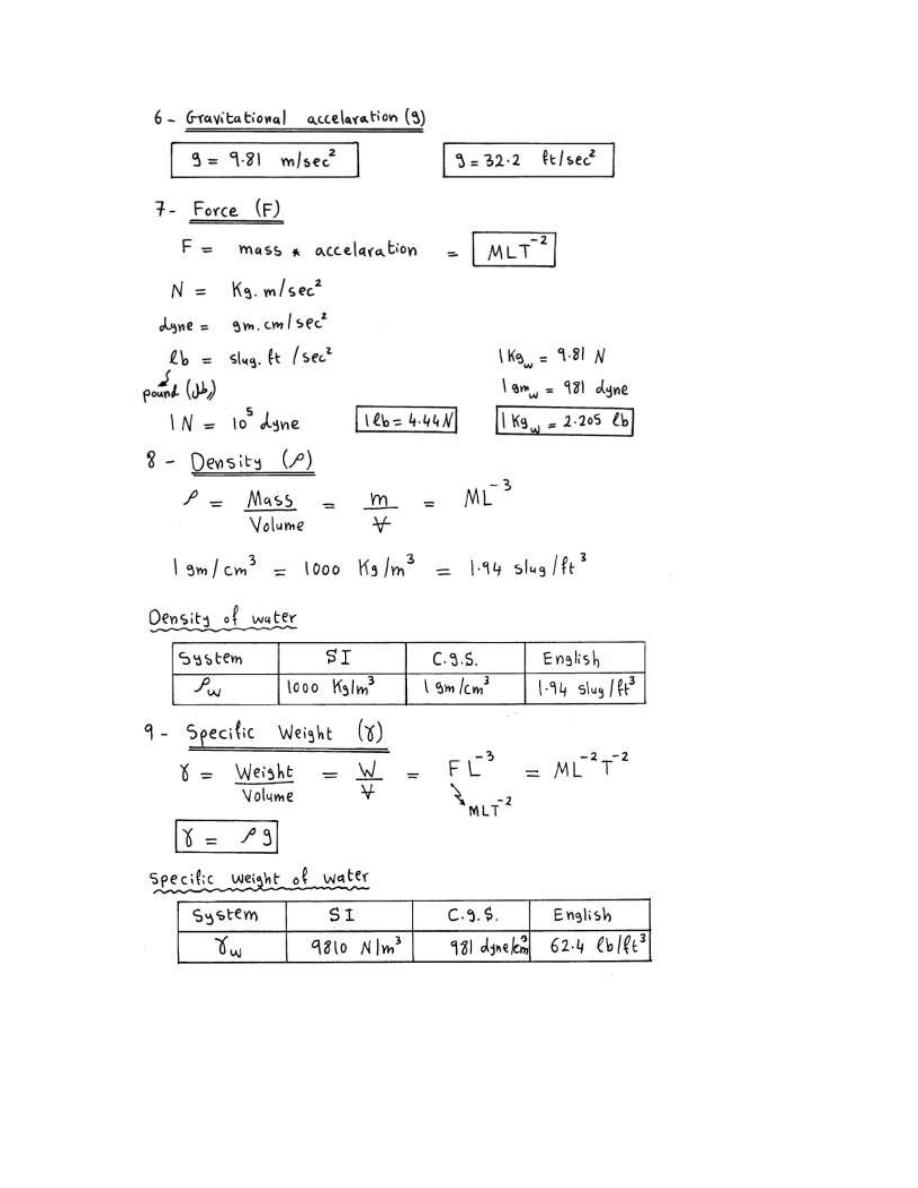
Page 6
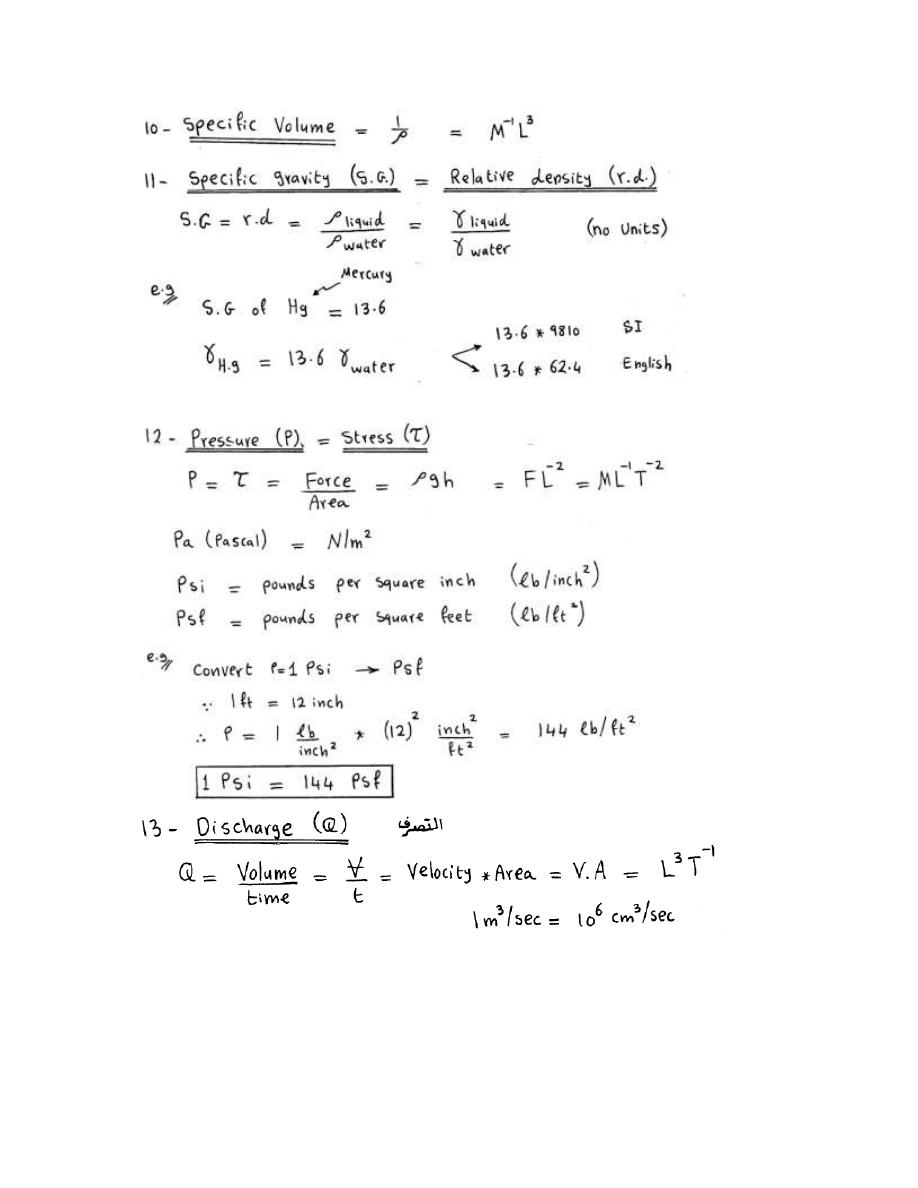
Page 7
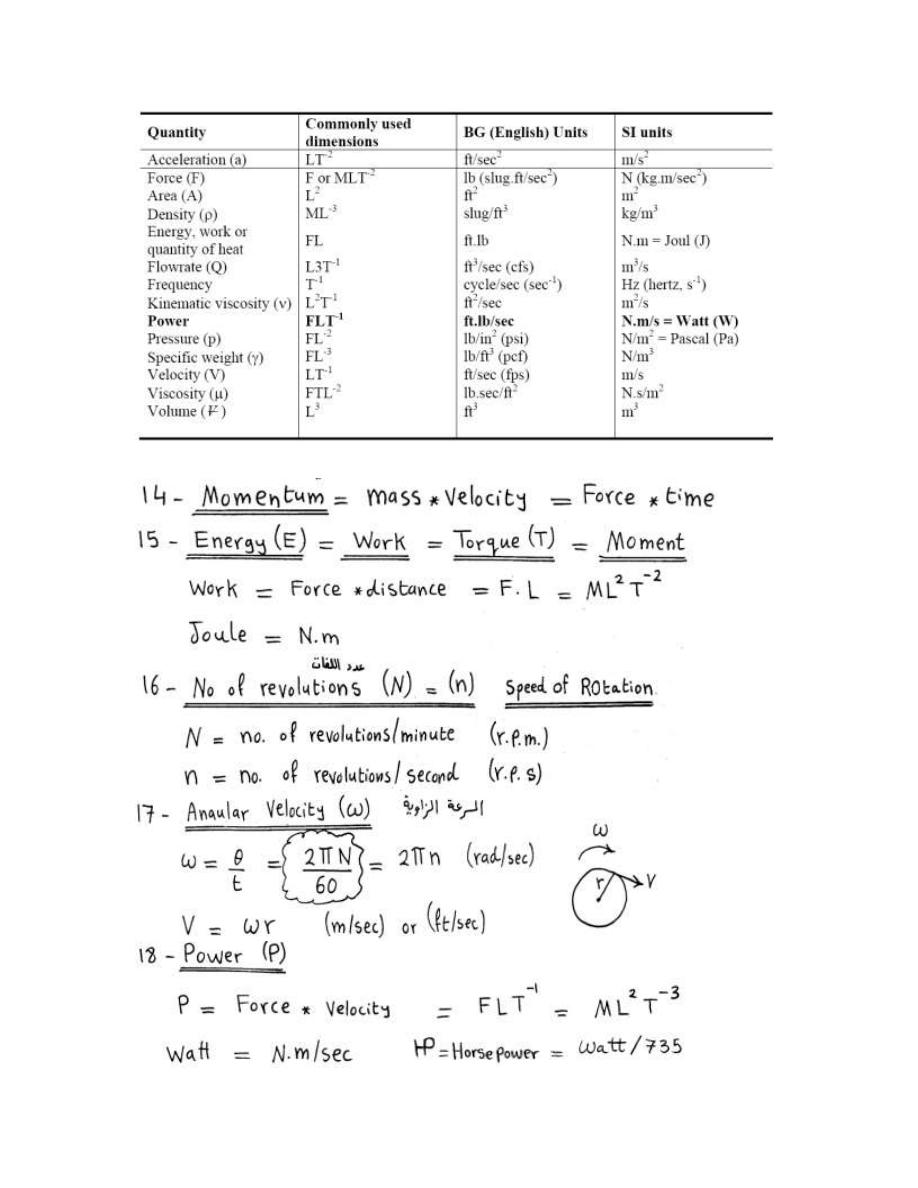
Page 8
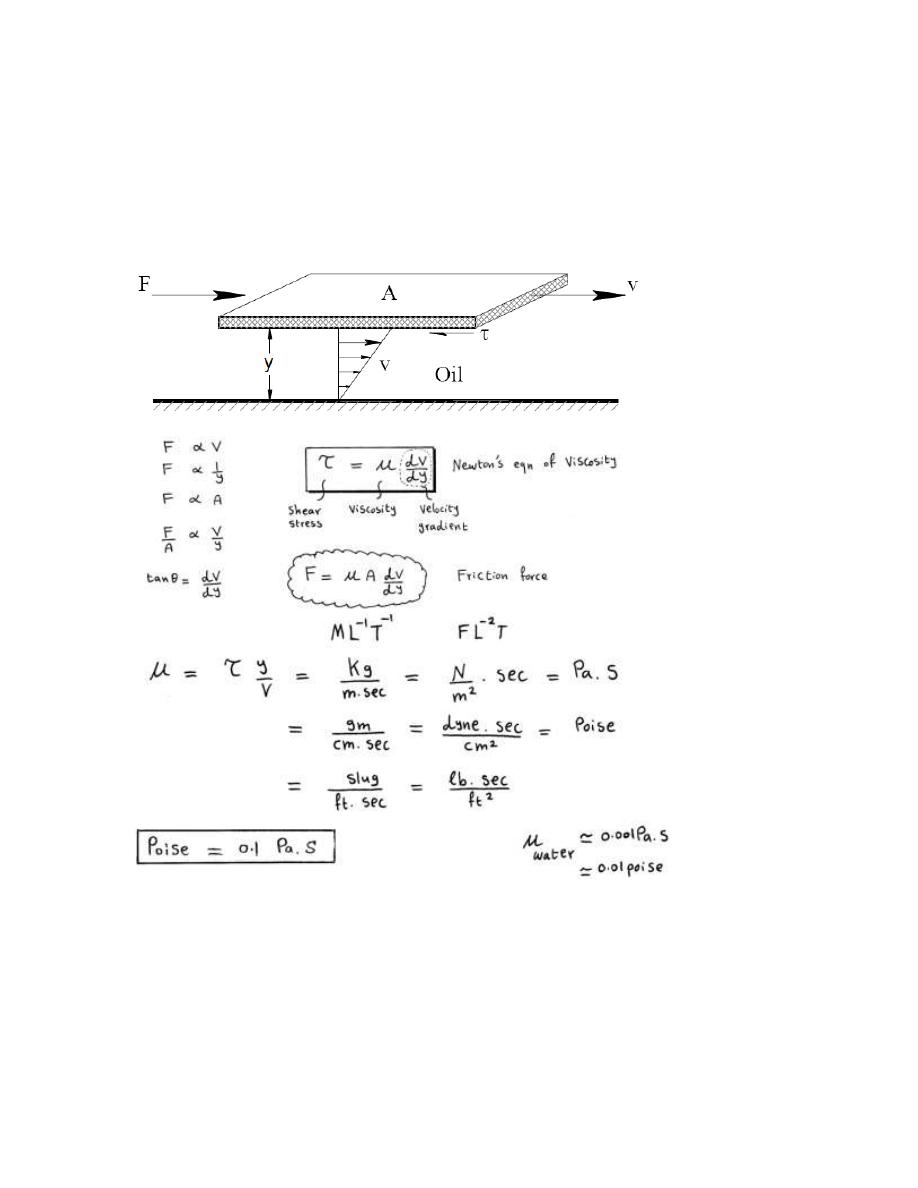
Page 9
Fluid Properties
1. Viscosity
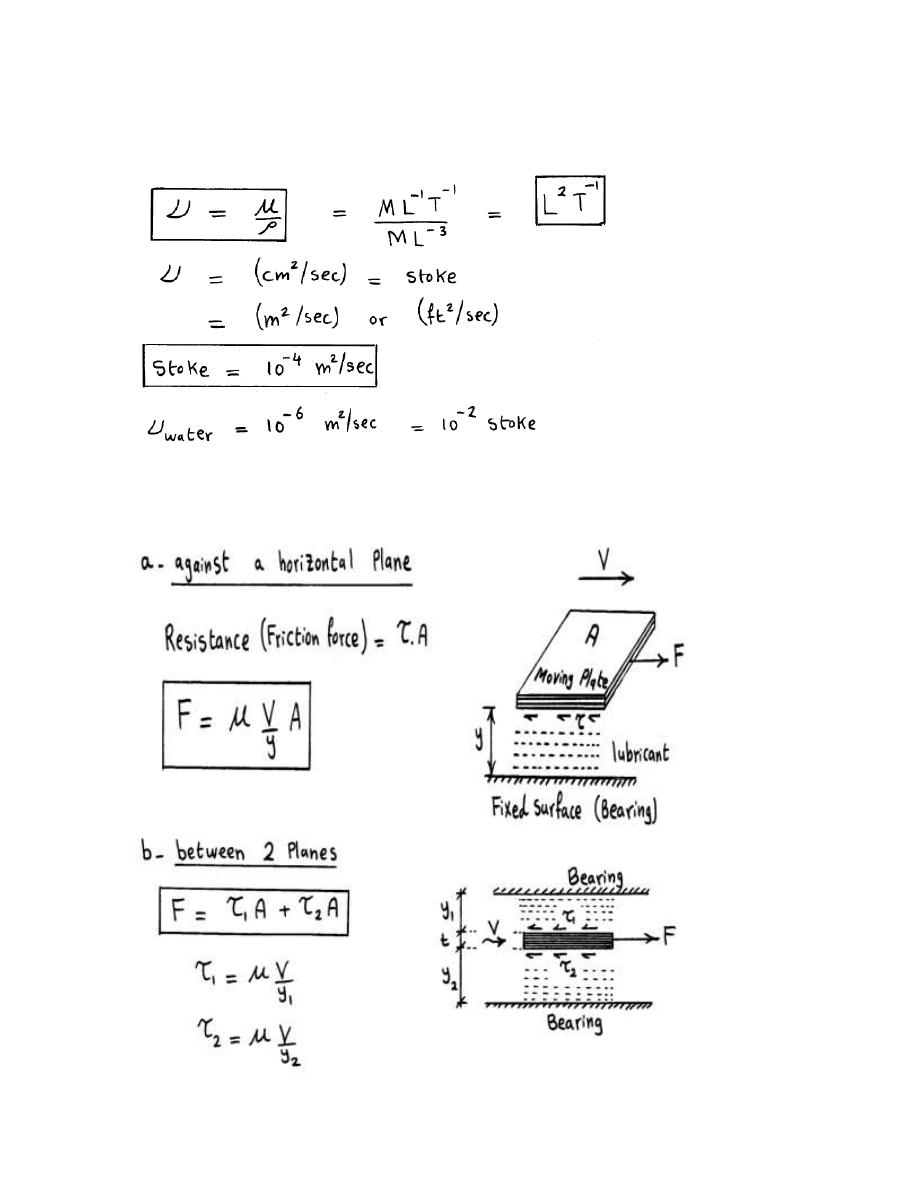
Page 10
2. Kinematic viscosity
Applications of Viscosity
1- Plate moving with uniform velocity
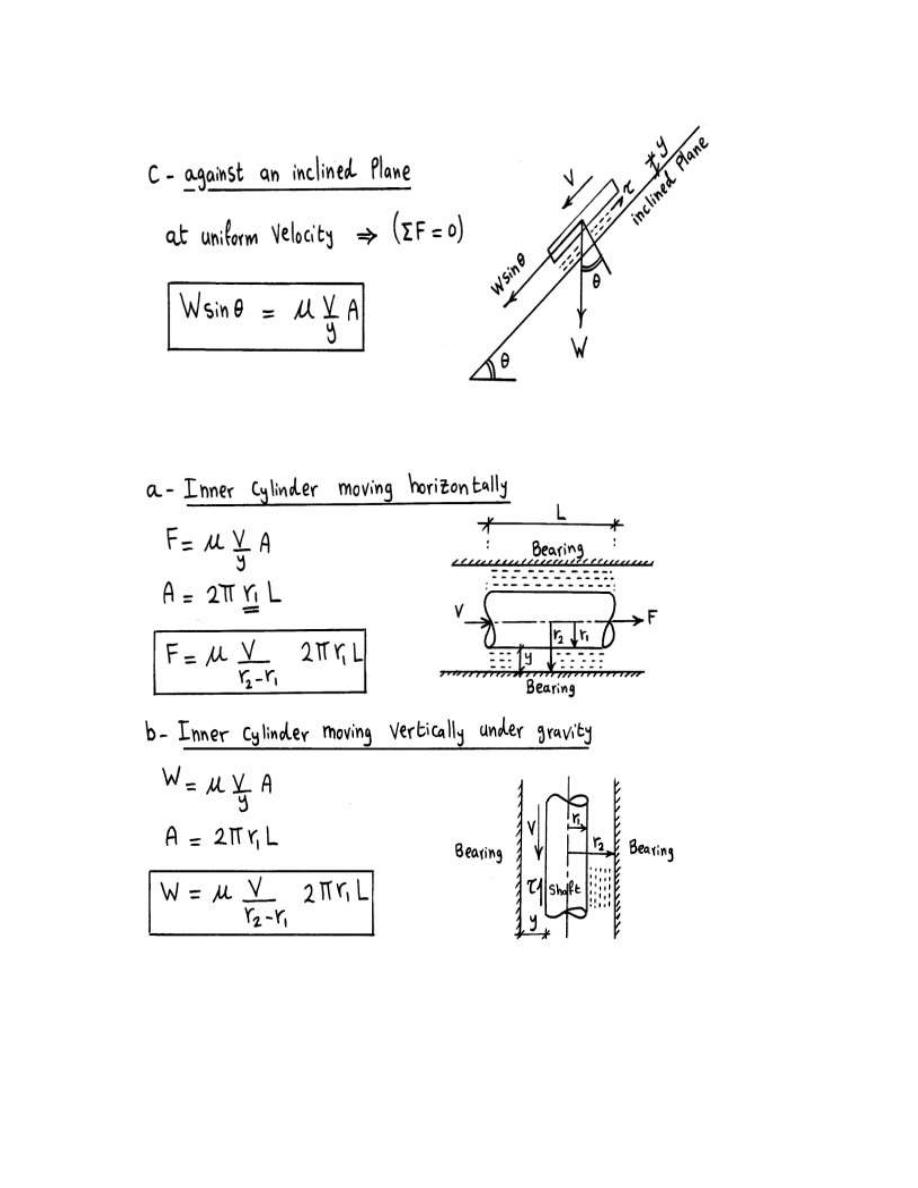
Page 11
2- Cylinder moving with uniform velocity
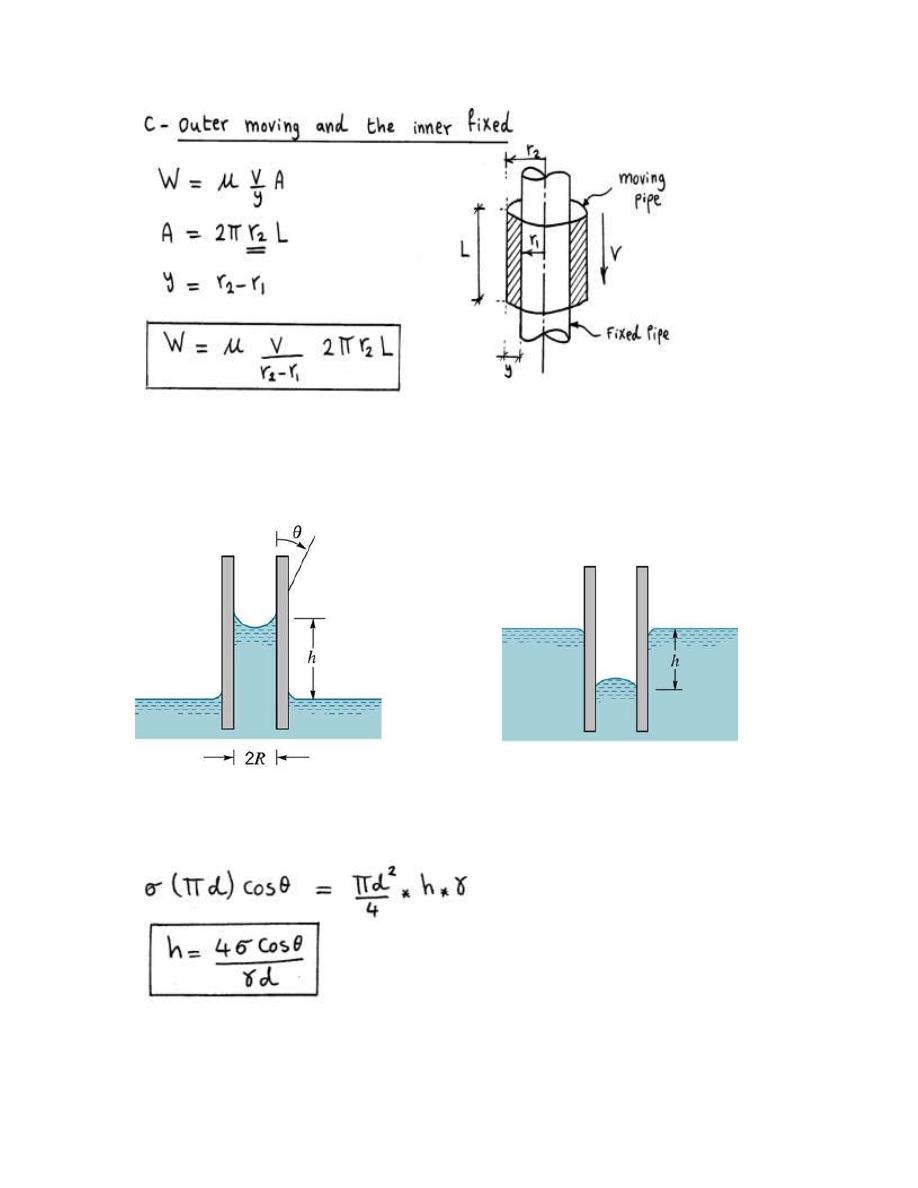
Page 12
2. Surface tension (σ)
Surface tension (σ): A liquid’s ability to resist tension
- Capillarity
Adhesion > Cohesion Cohesion > Adhesion
Cohesion:
Inner force between liquid molecules.
Adhesion:
Attraction force between liquids, and a solid surface.
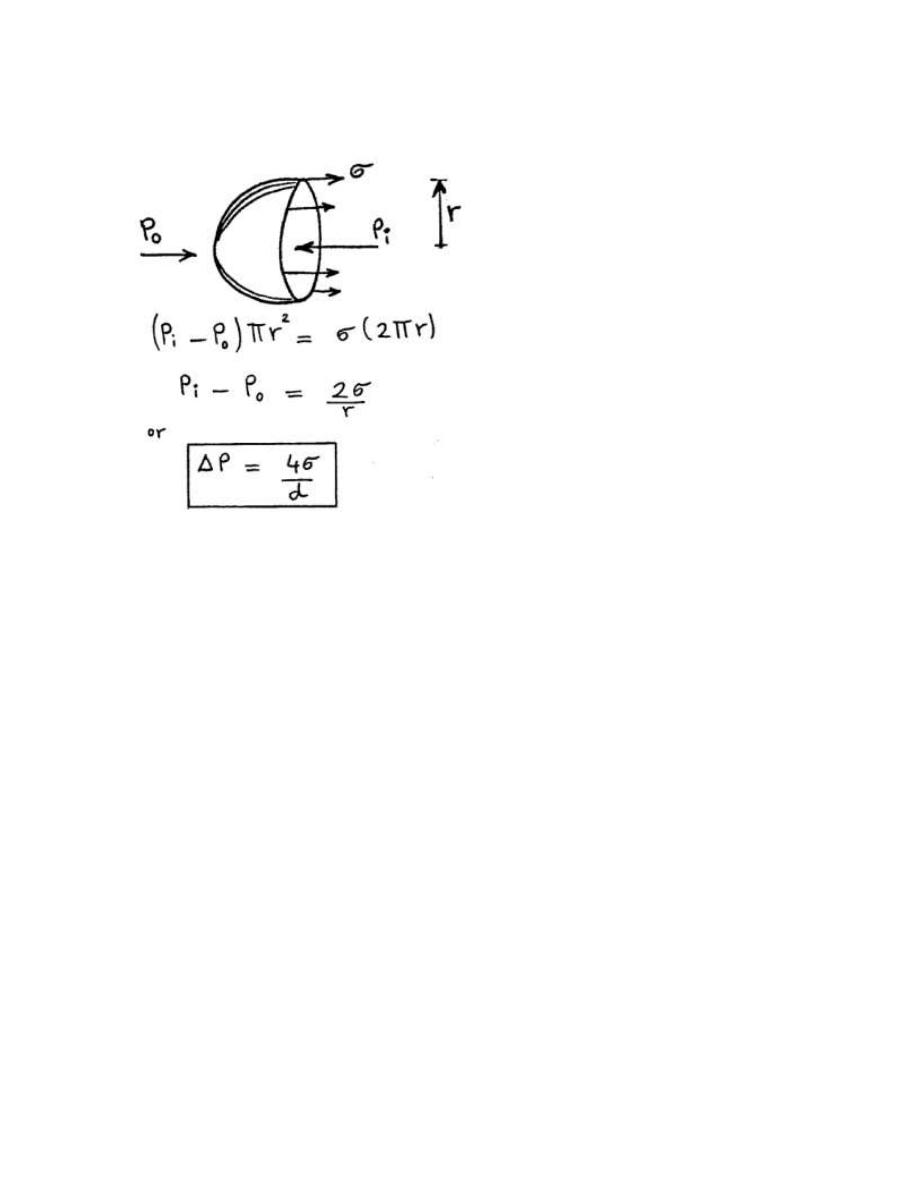
Page 13
- Water droplets
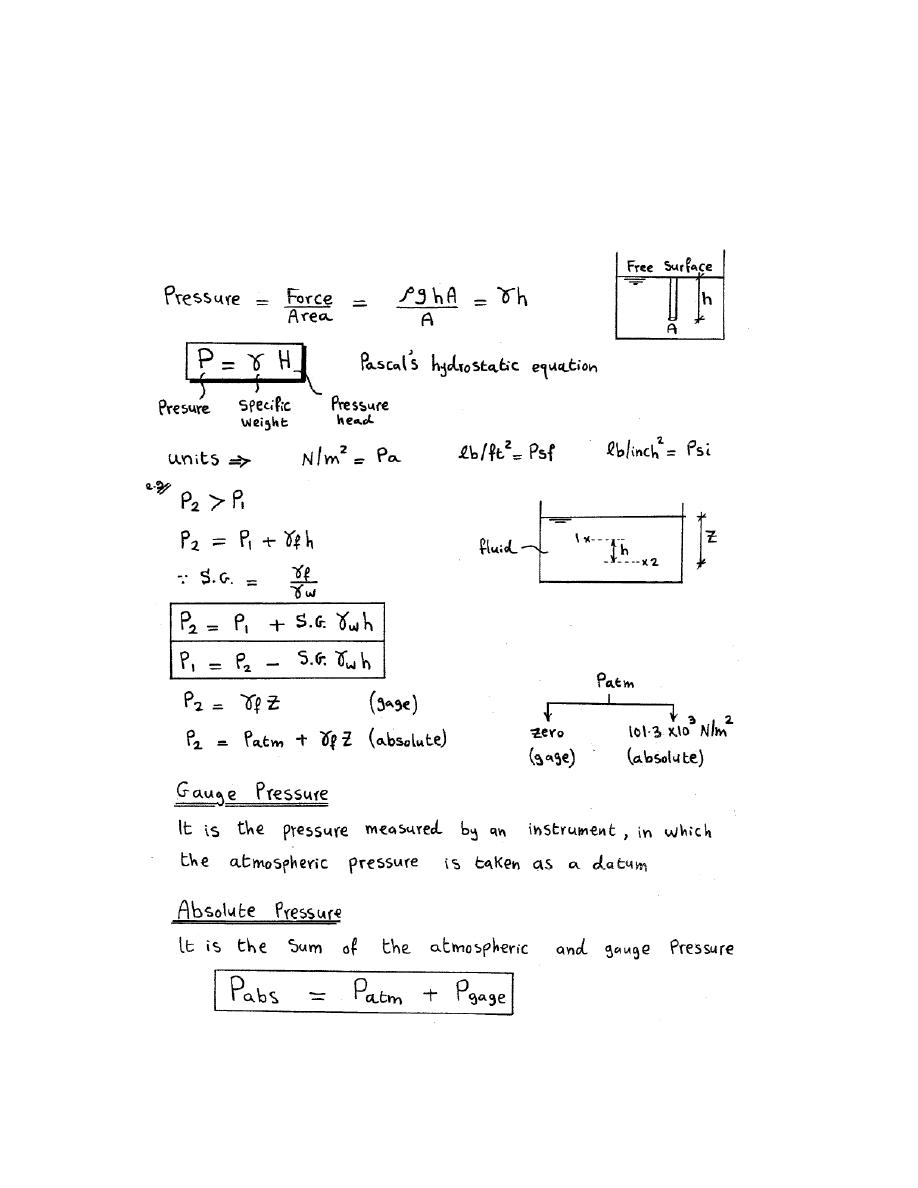
Page 14
Static
1. Hydrostatic pressure
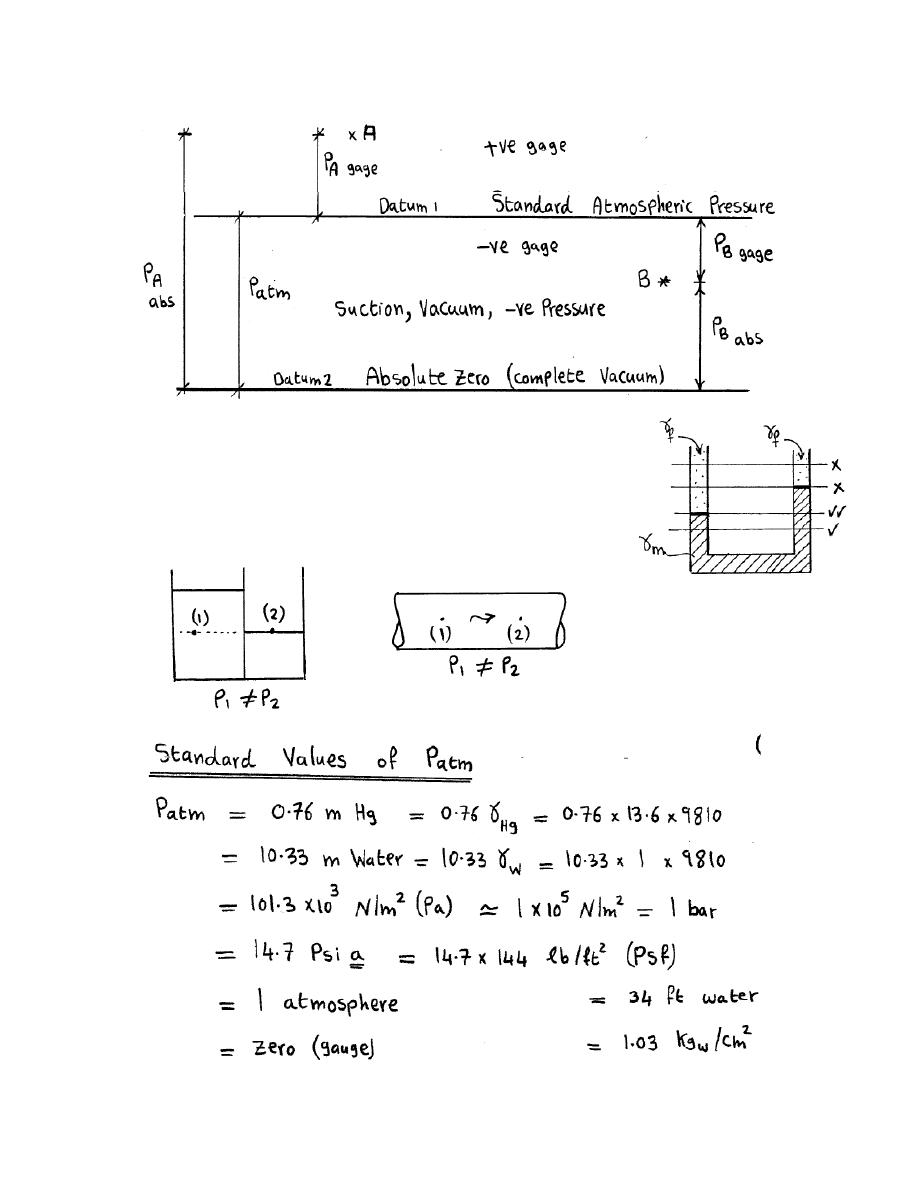
Page 15
Pressure equilibrium conditions between two points
1. both point should be in the same fluid
2. the fluid is in static condition
3. fluid is connected
4. free surface on the same level
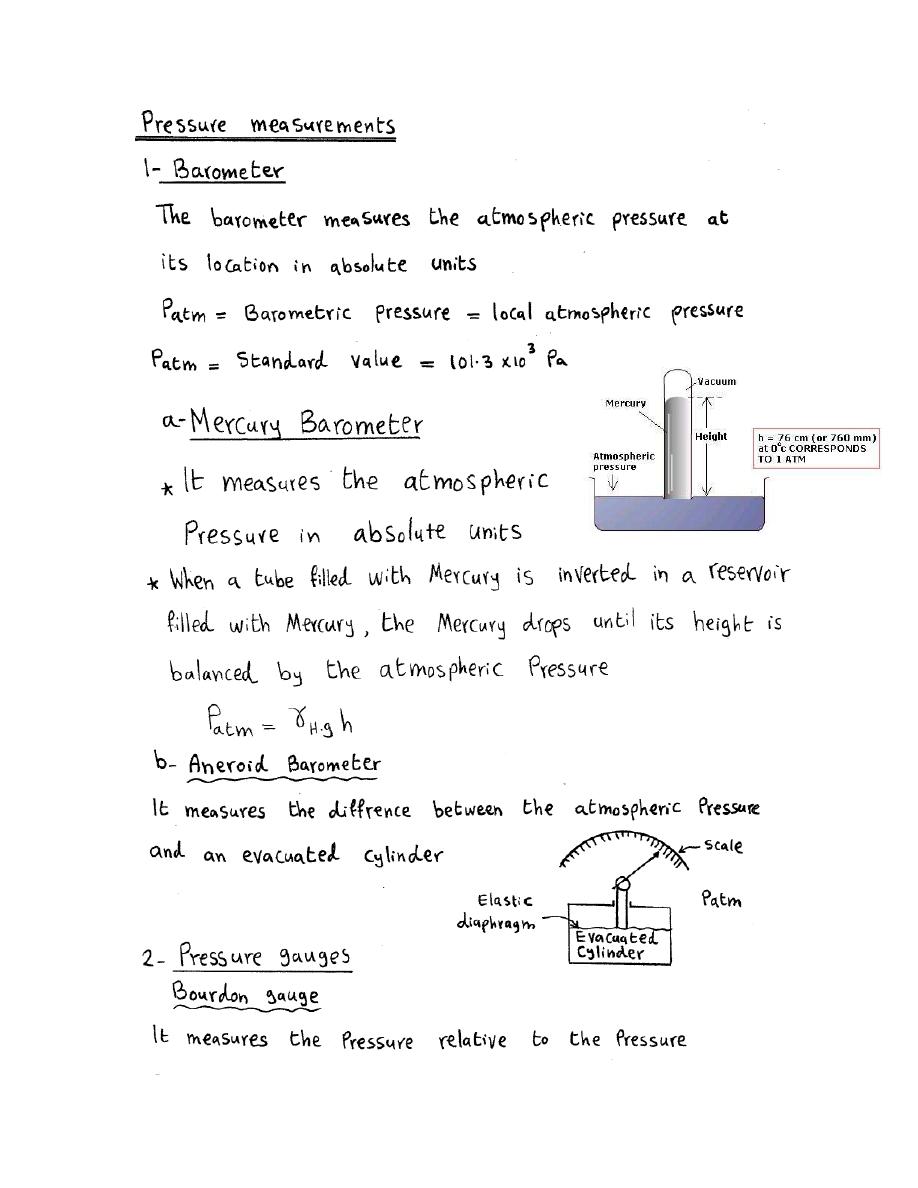
Page 16
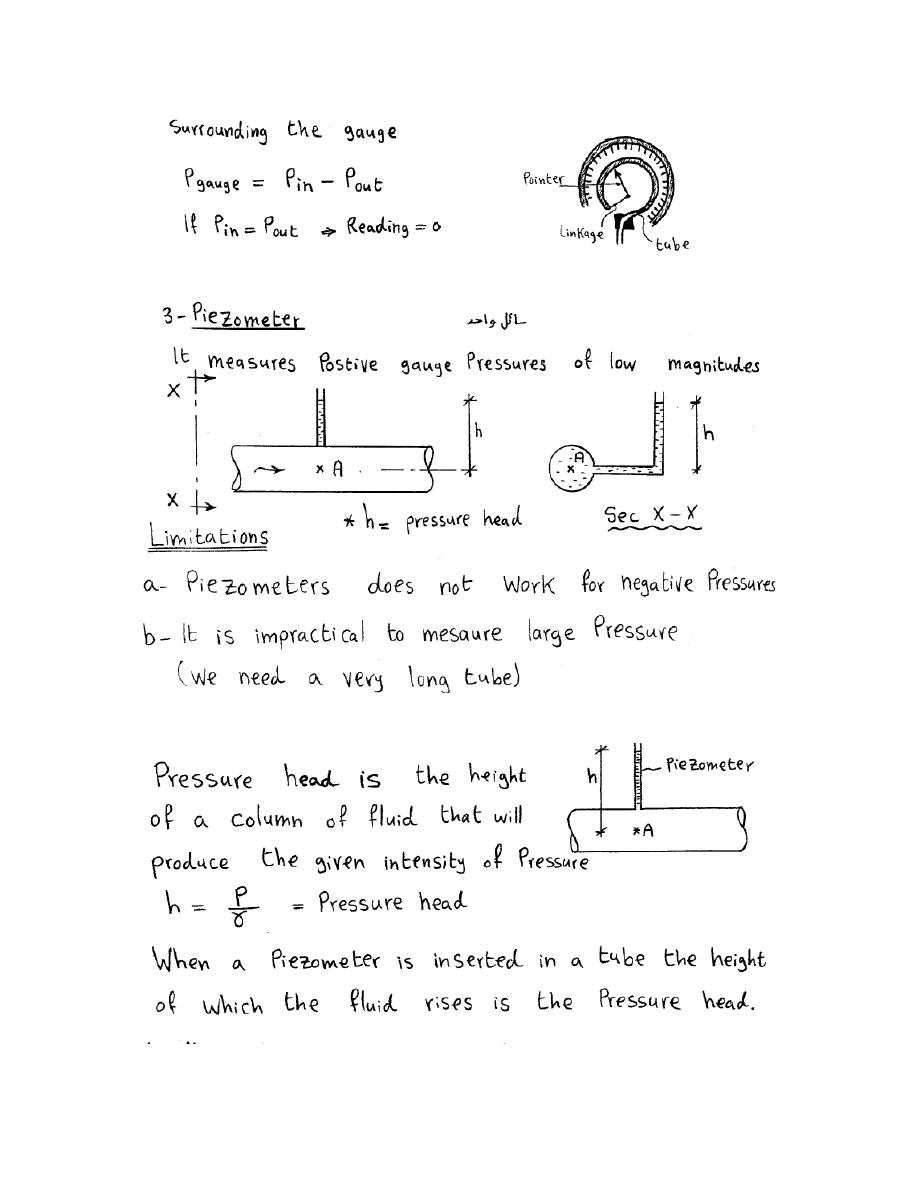
Page 17
Pressure Head
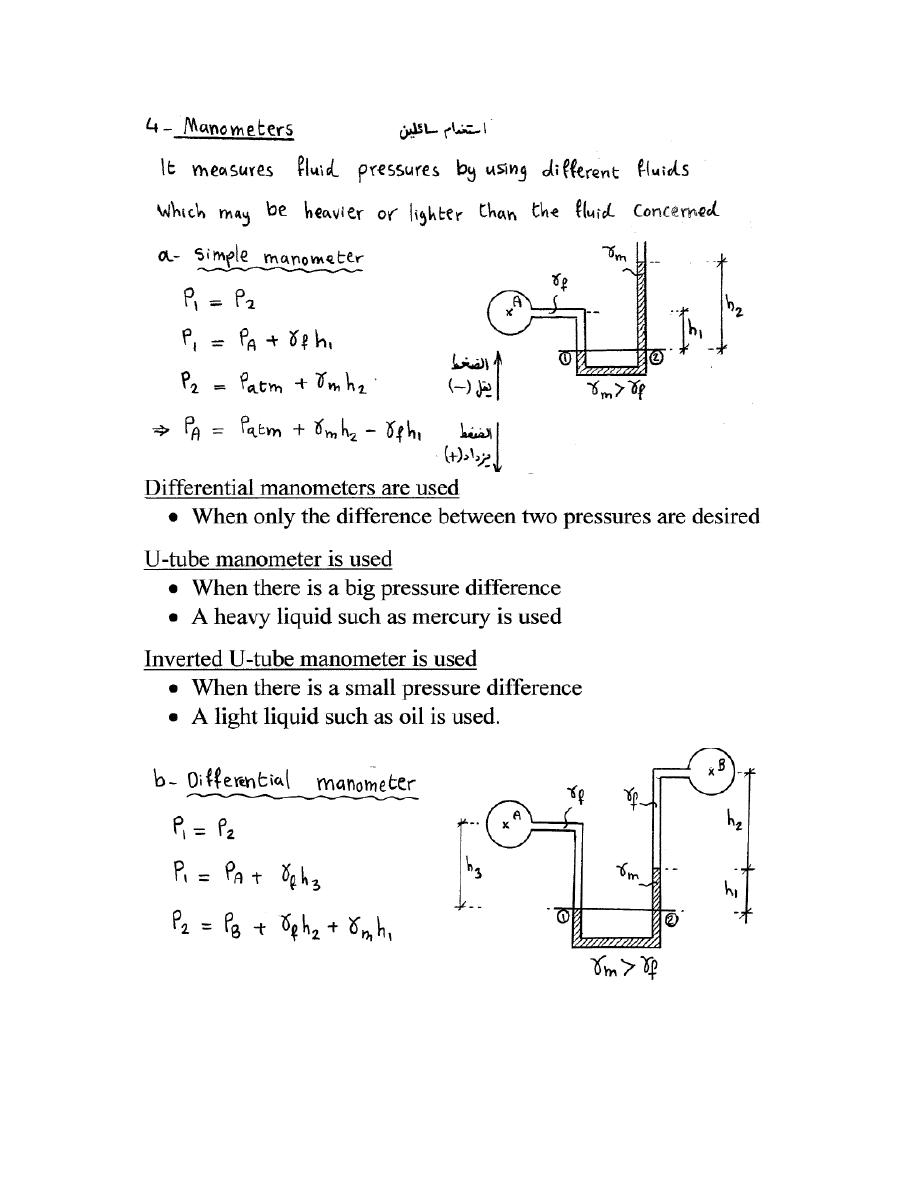
Page 18
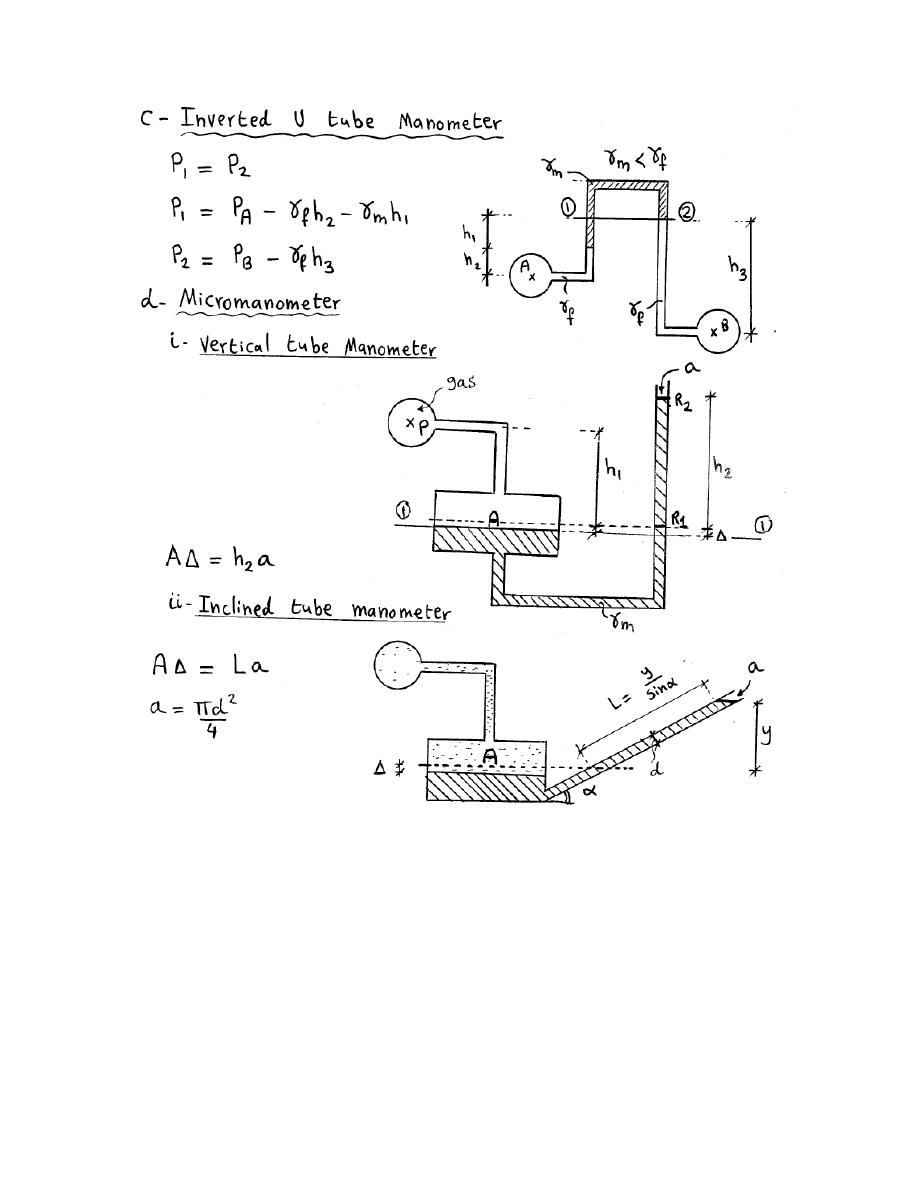
Page 19
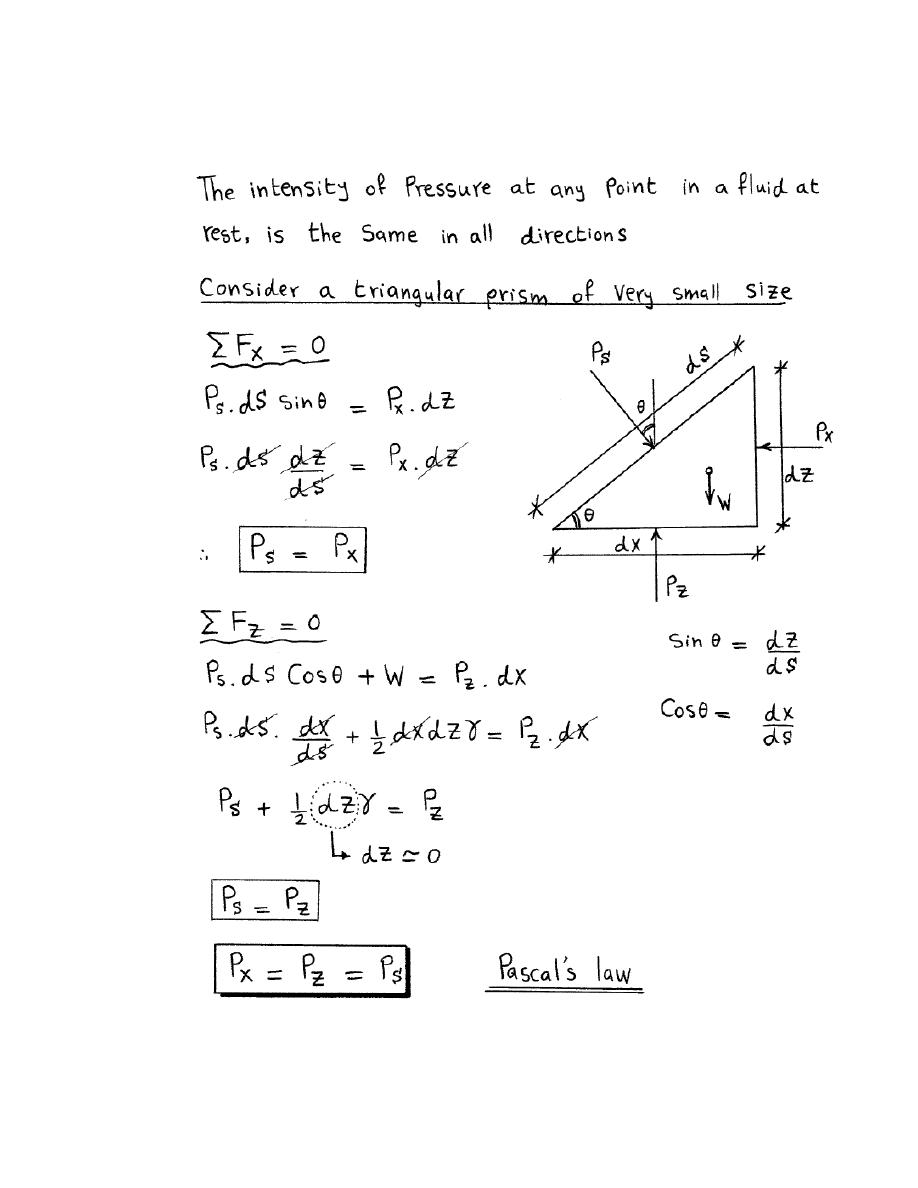
Page 20
Pascal’s Law
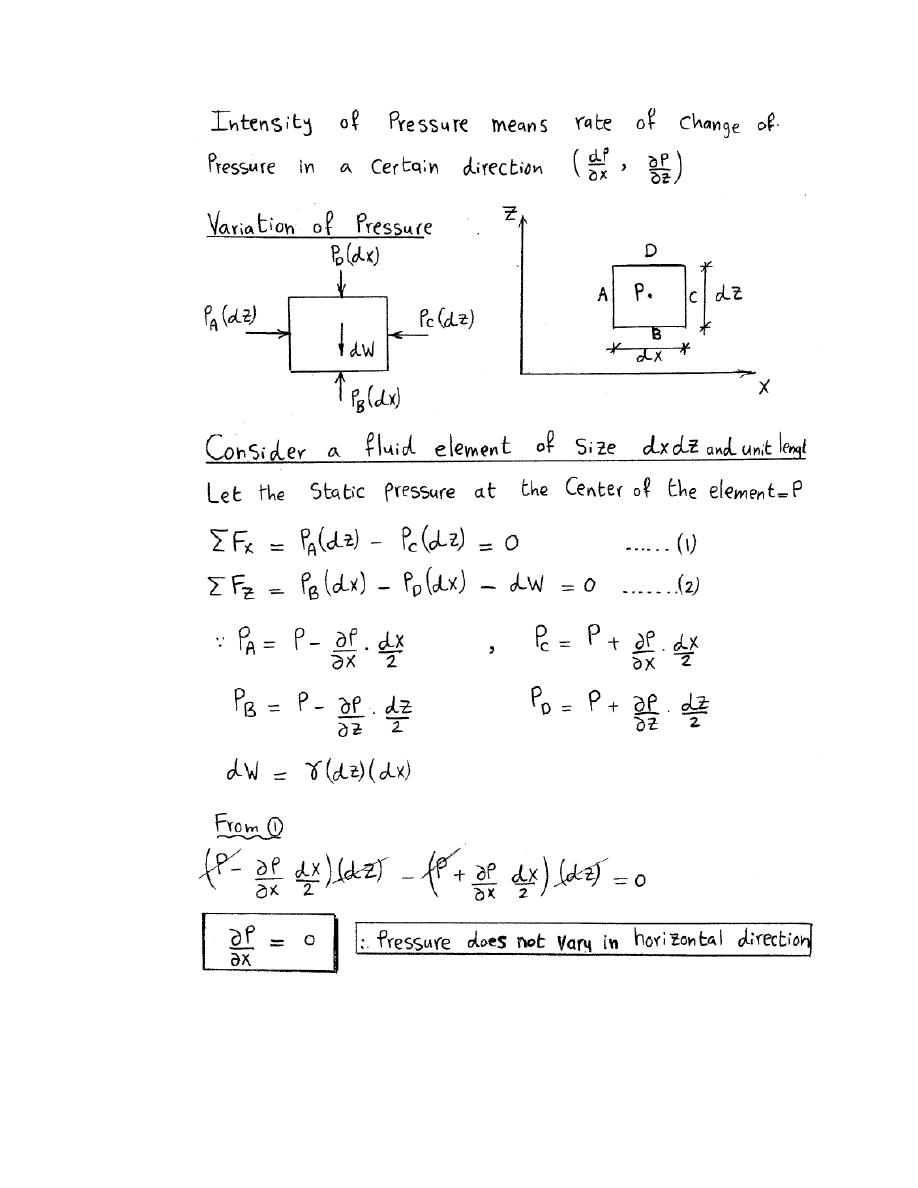
Page 21
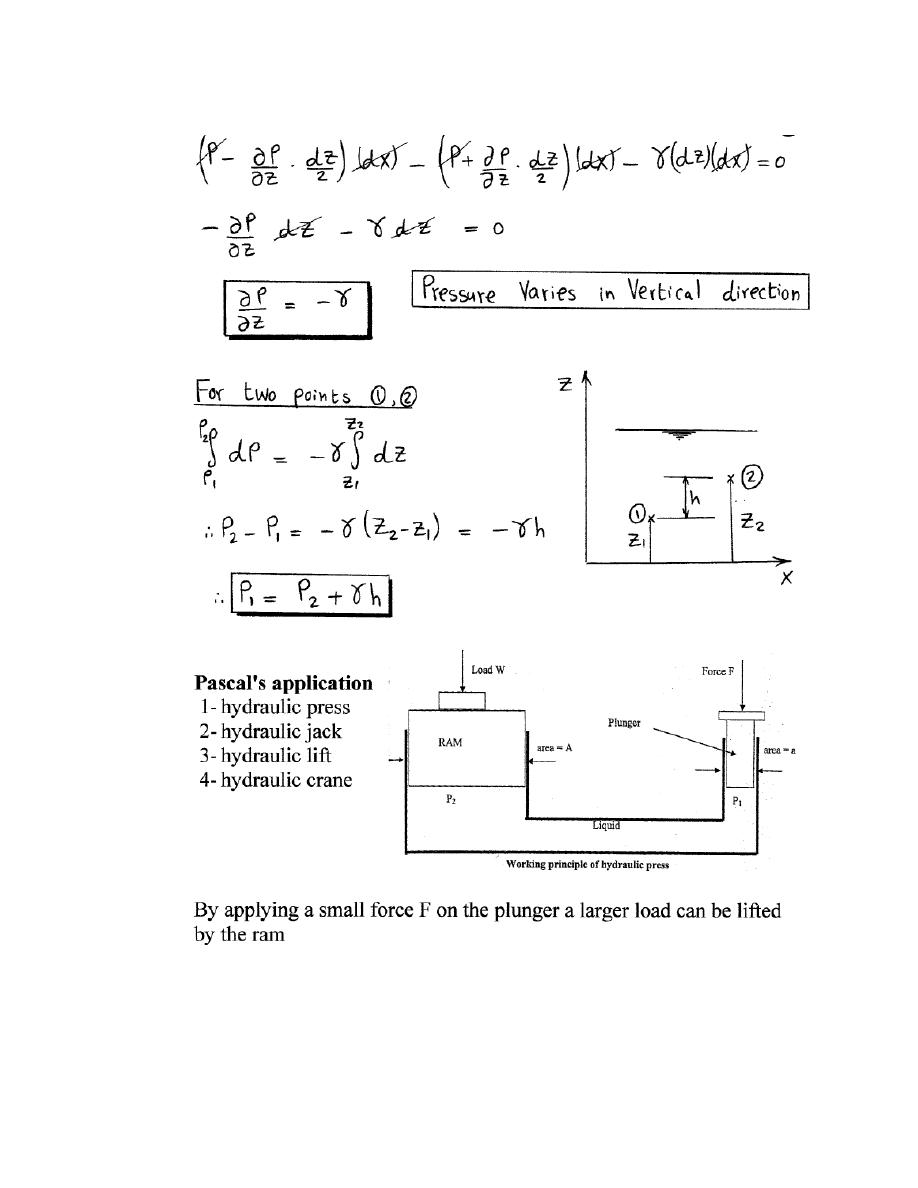
Page 22
Form 2
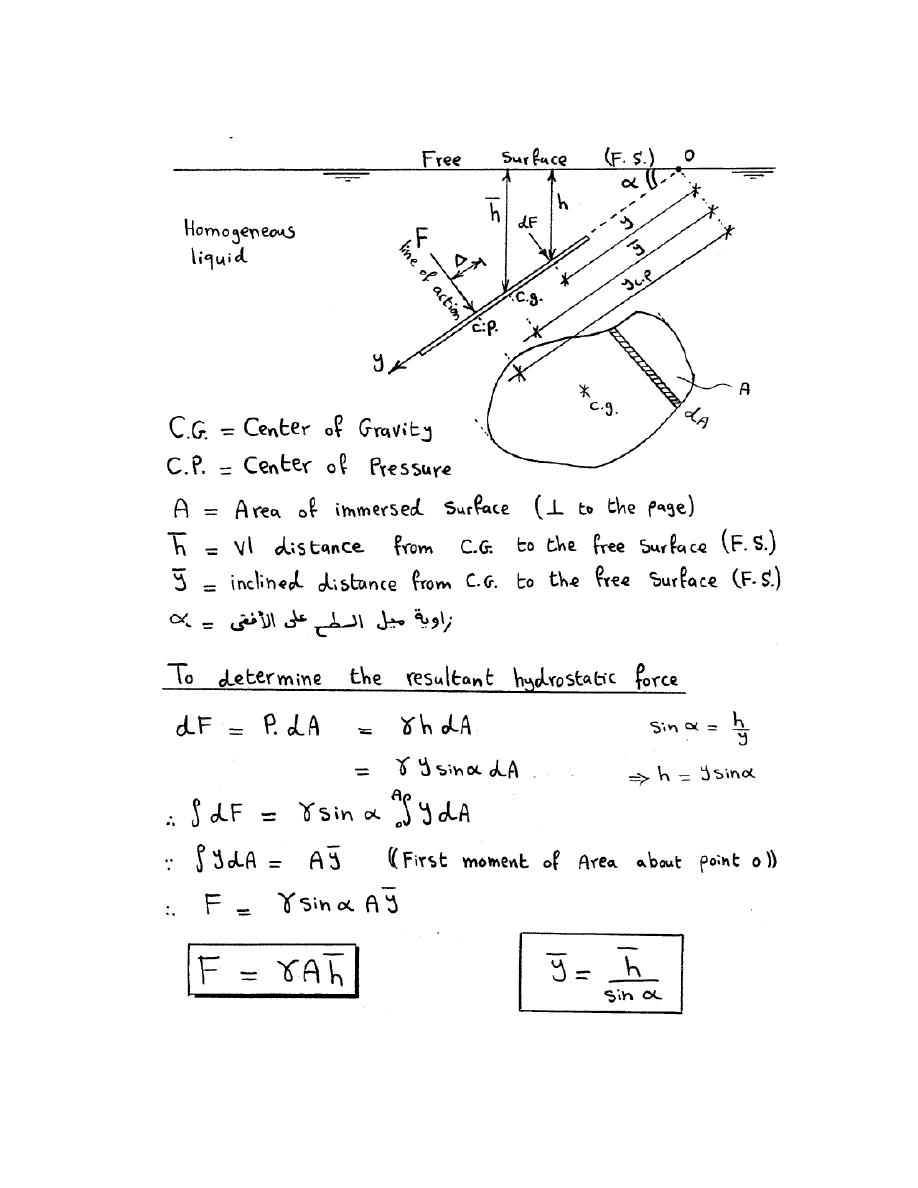
Page 23
Forces on plane surfaces
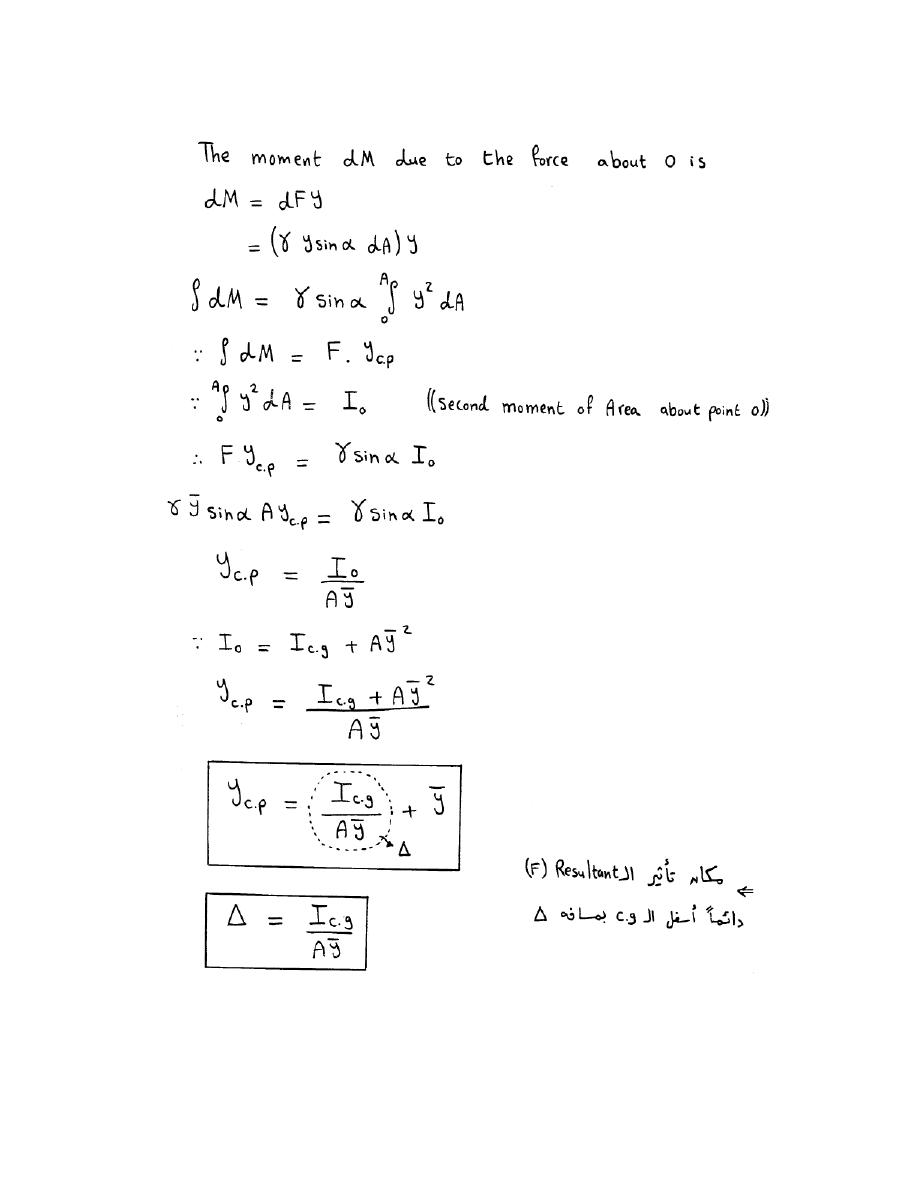
Page 24
To determine the line of action
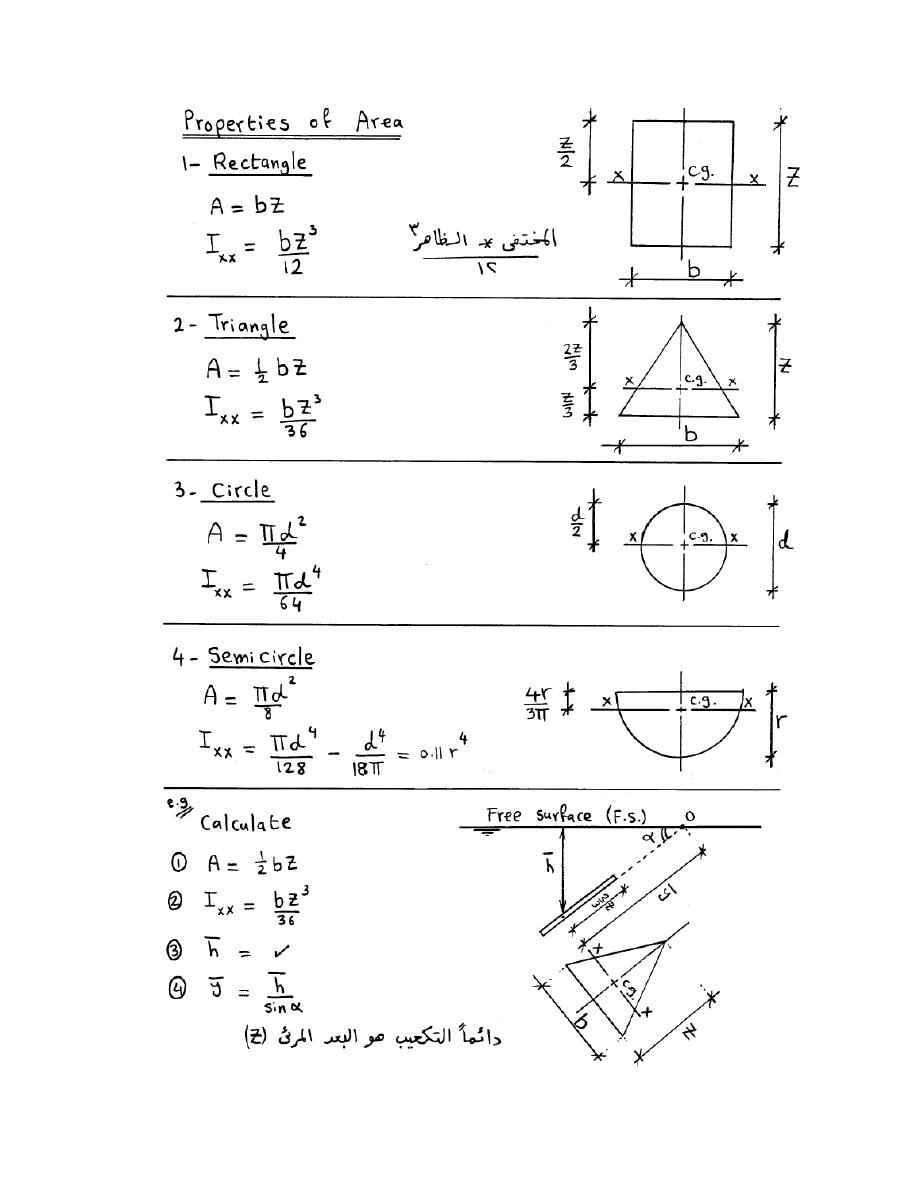
Page 25
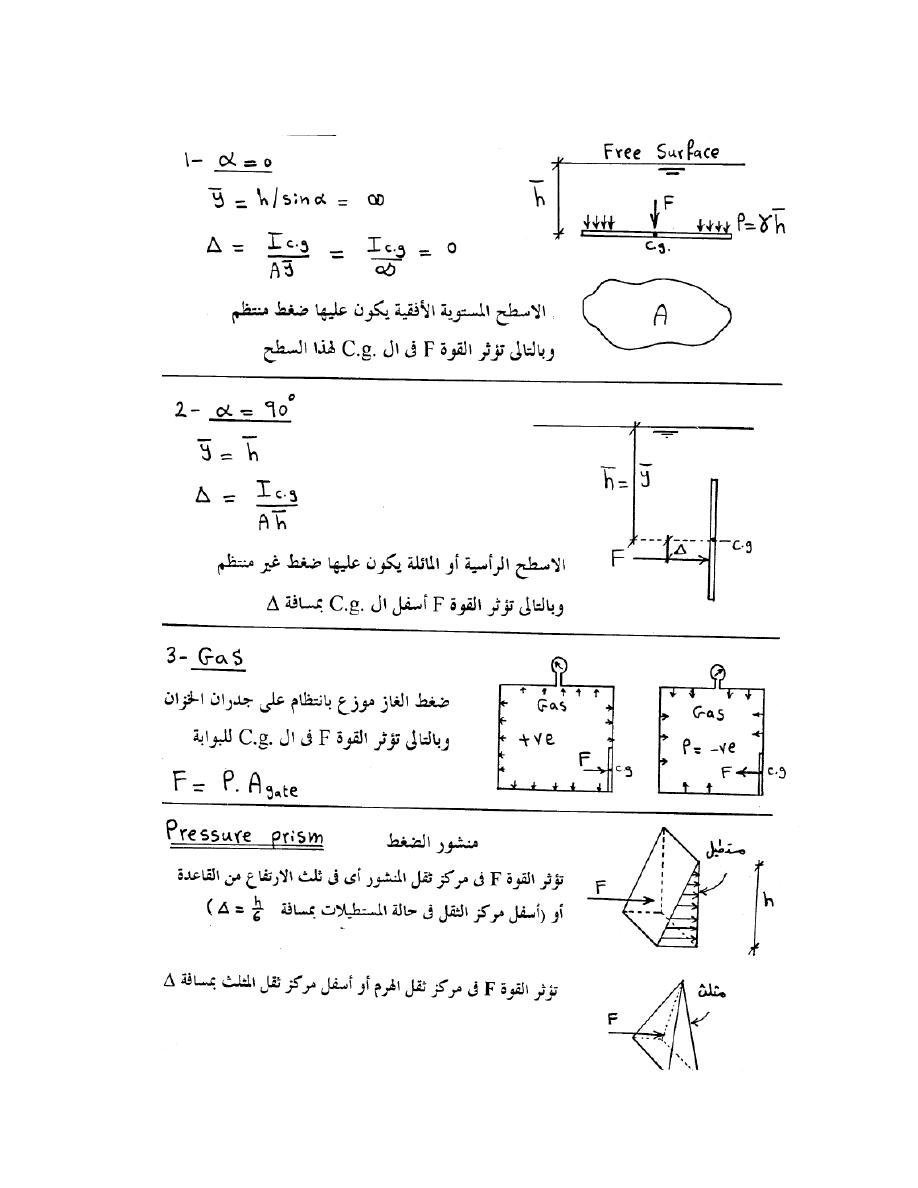
Page 26
Special Cases
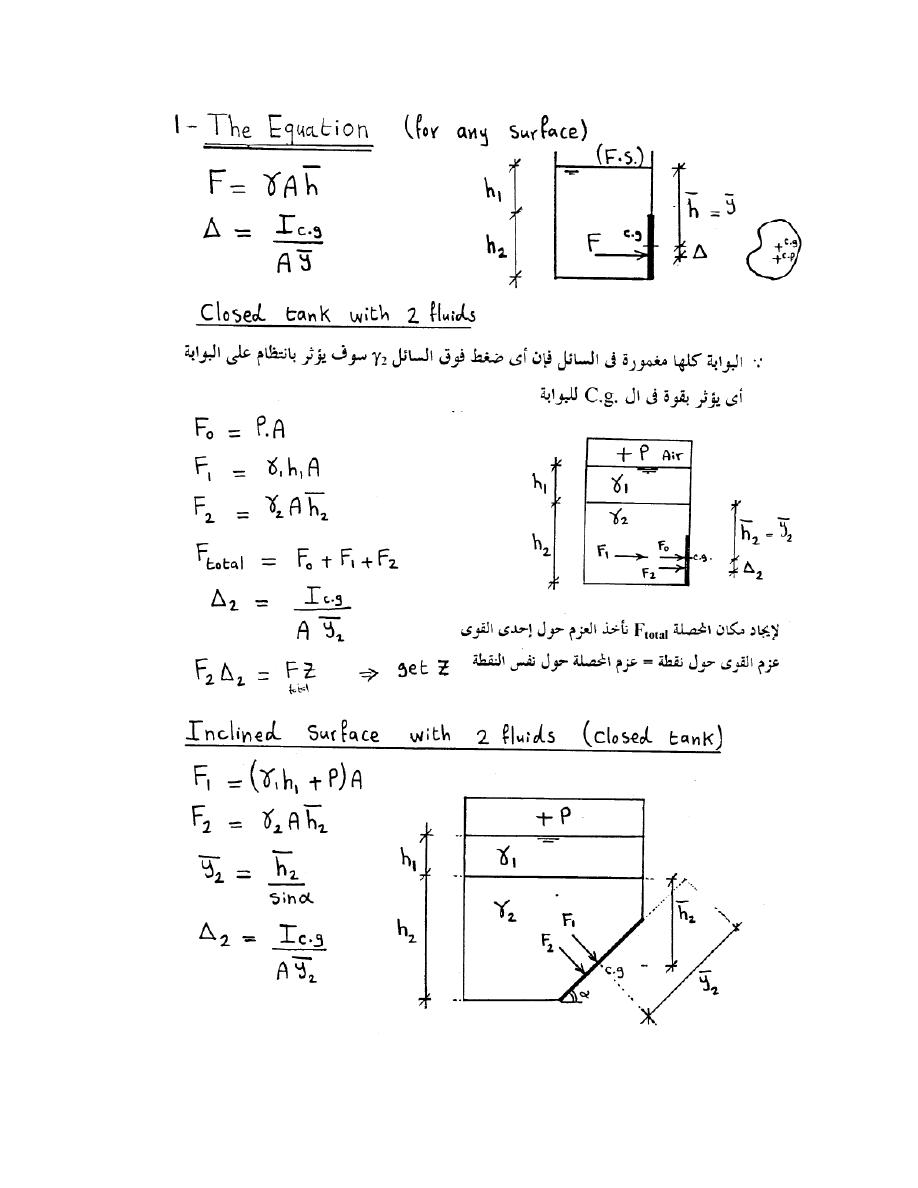
Page 27
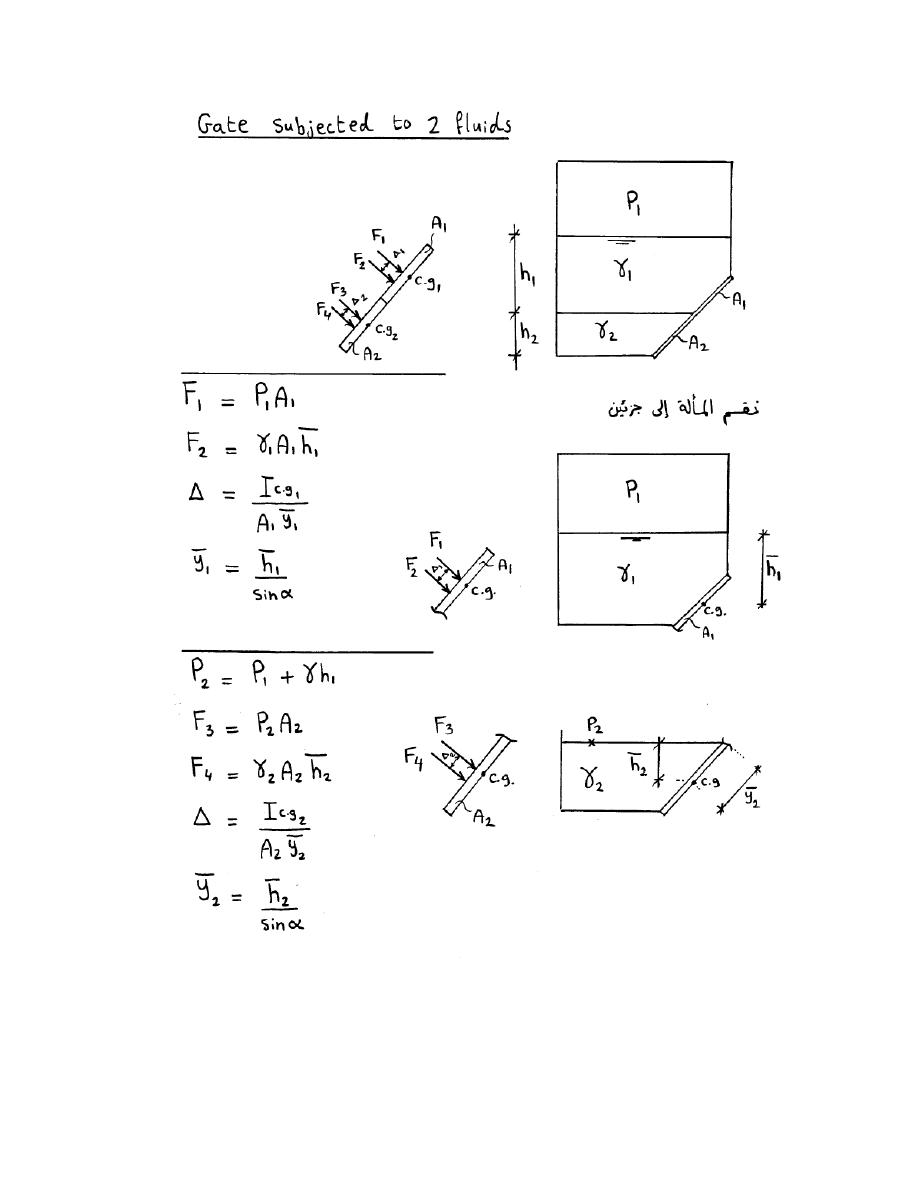
Page 28
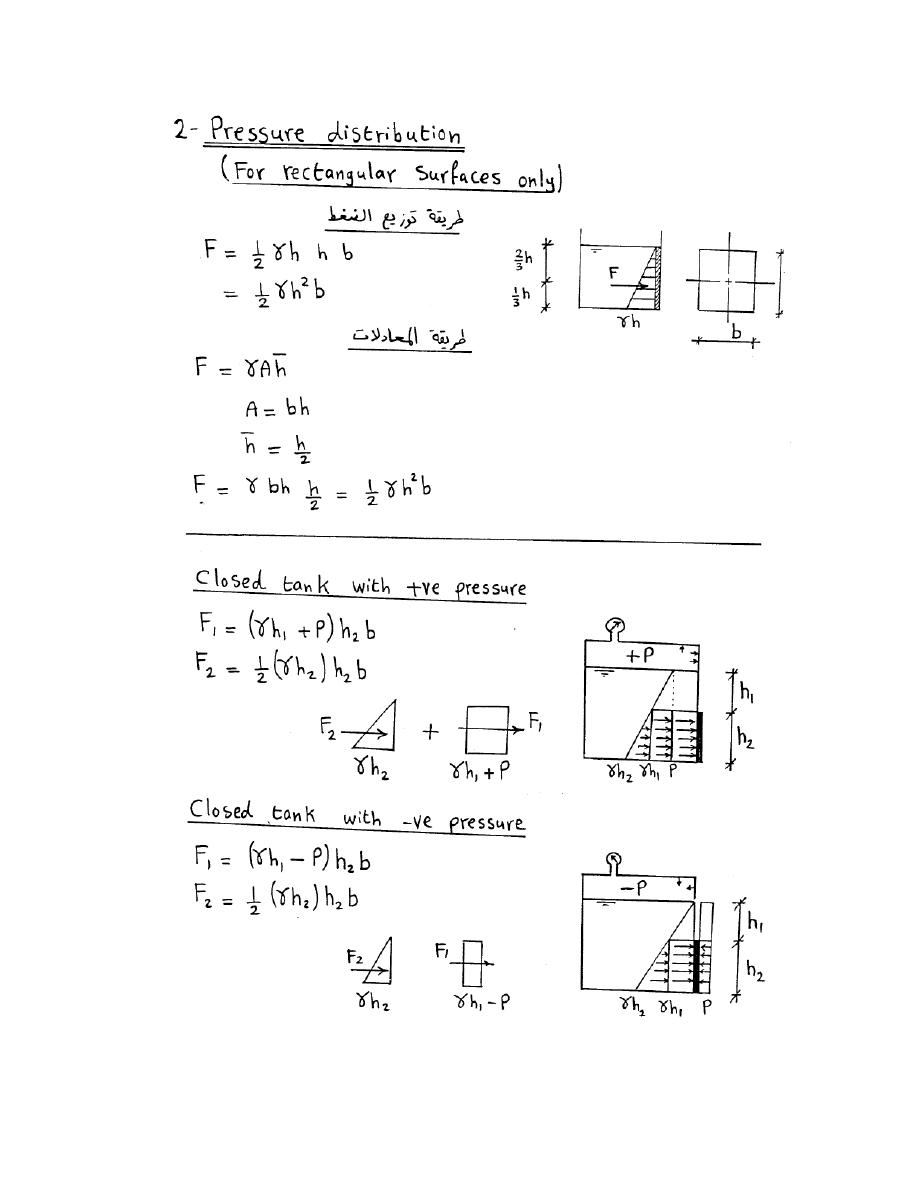
Page 29
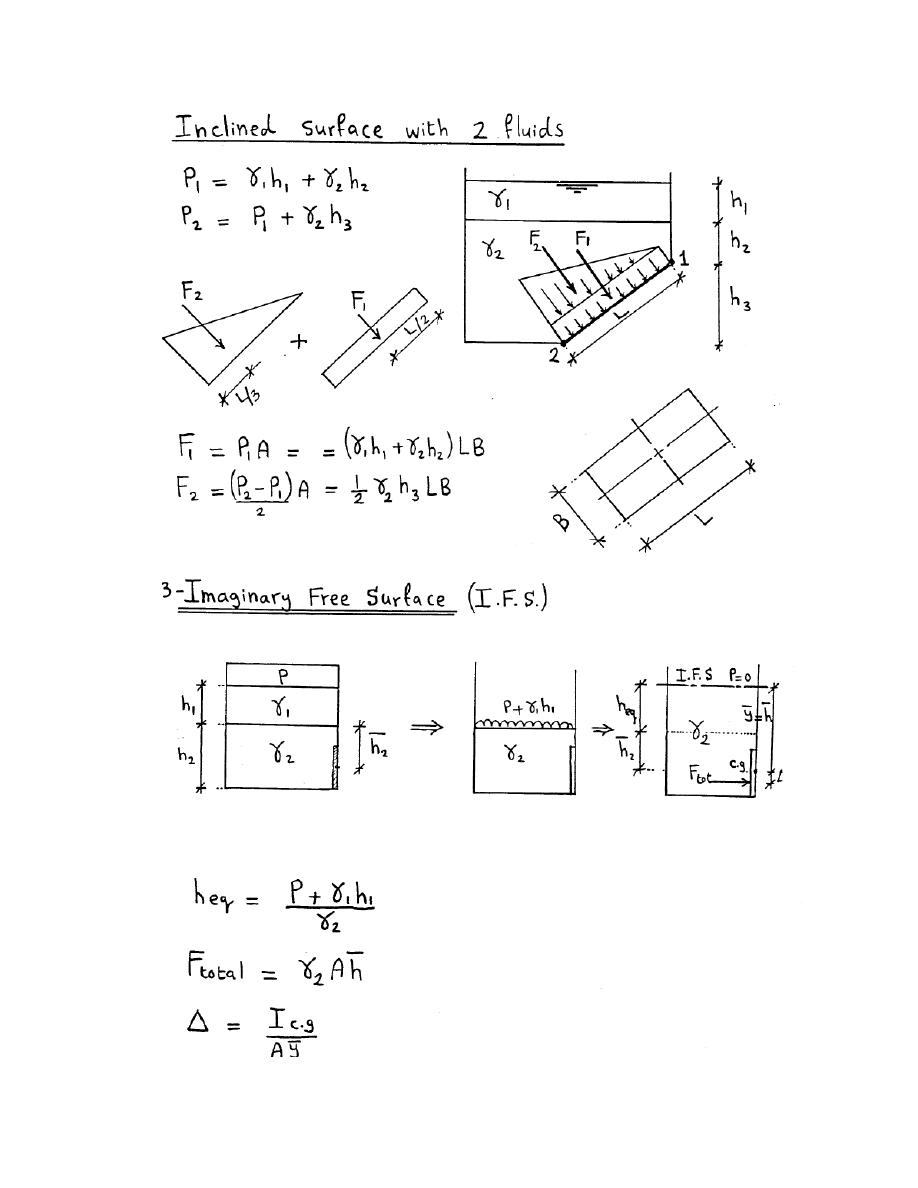
Page 30
Find free surface for immersed gates
Convert head pressure γ1h1 and pressure to equivalent fluid
head γ2
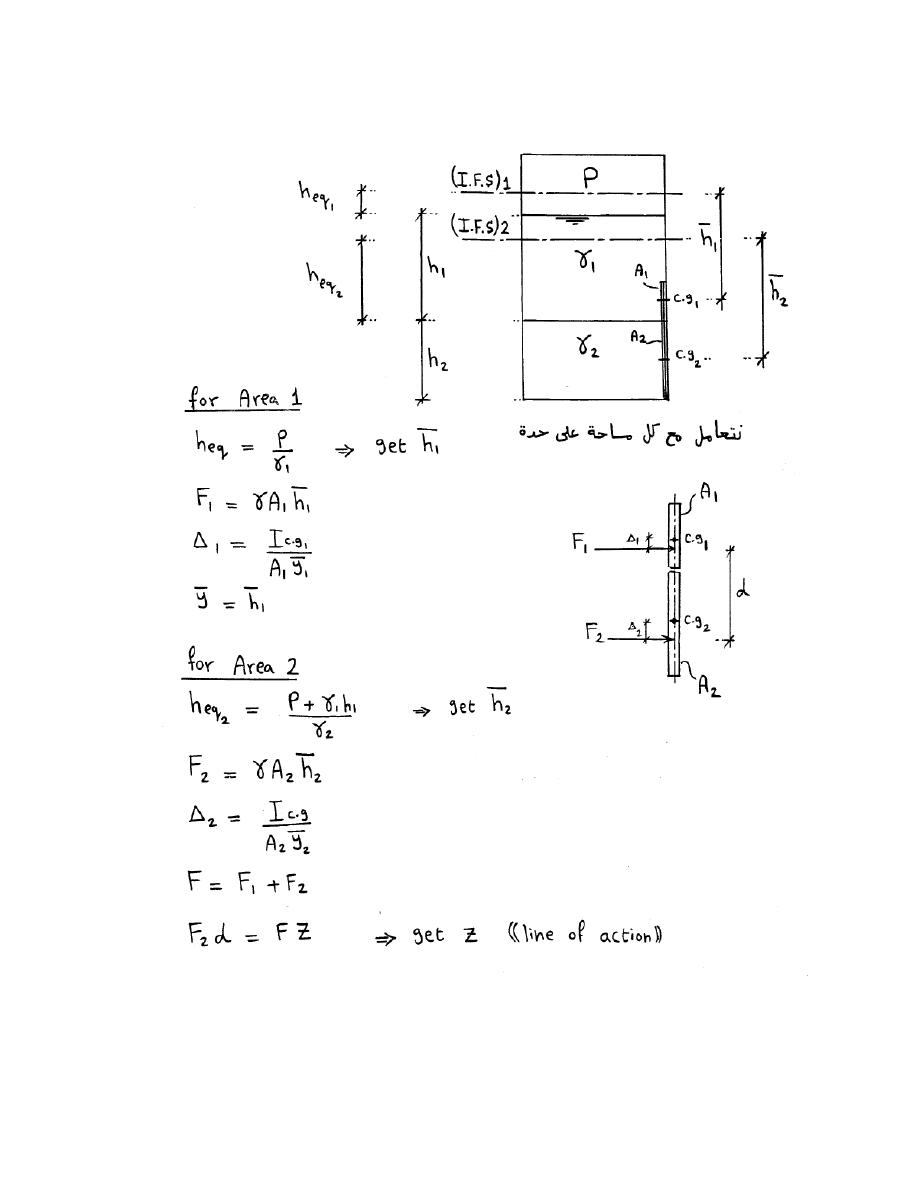
Page 31
Fluid subjected to two fluids
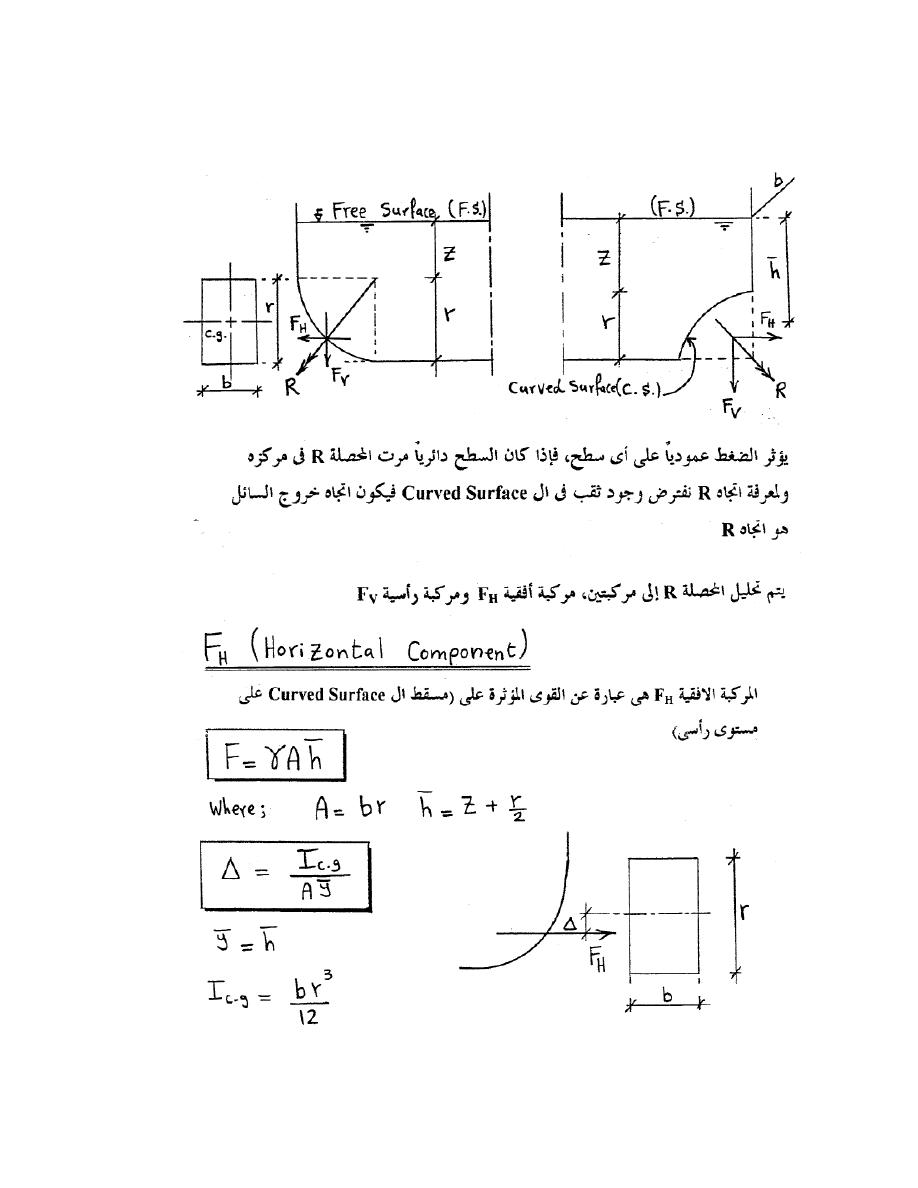
Page 32
Forces on curved surfaces
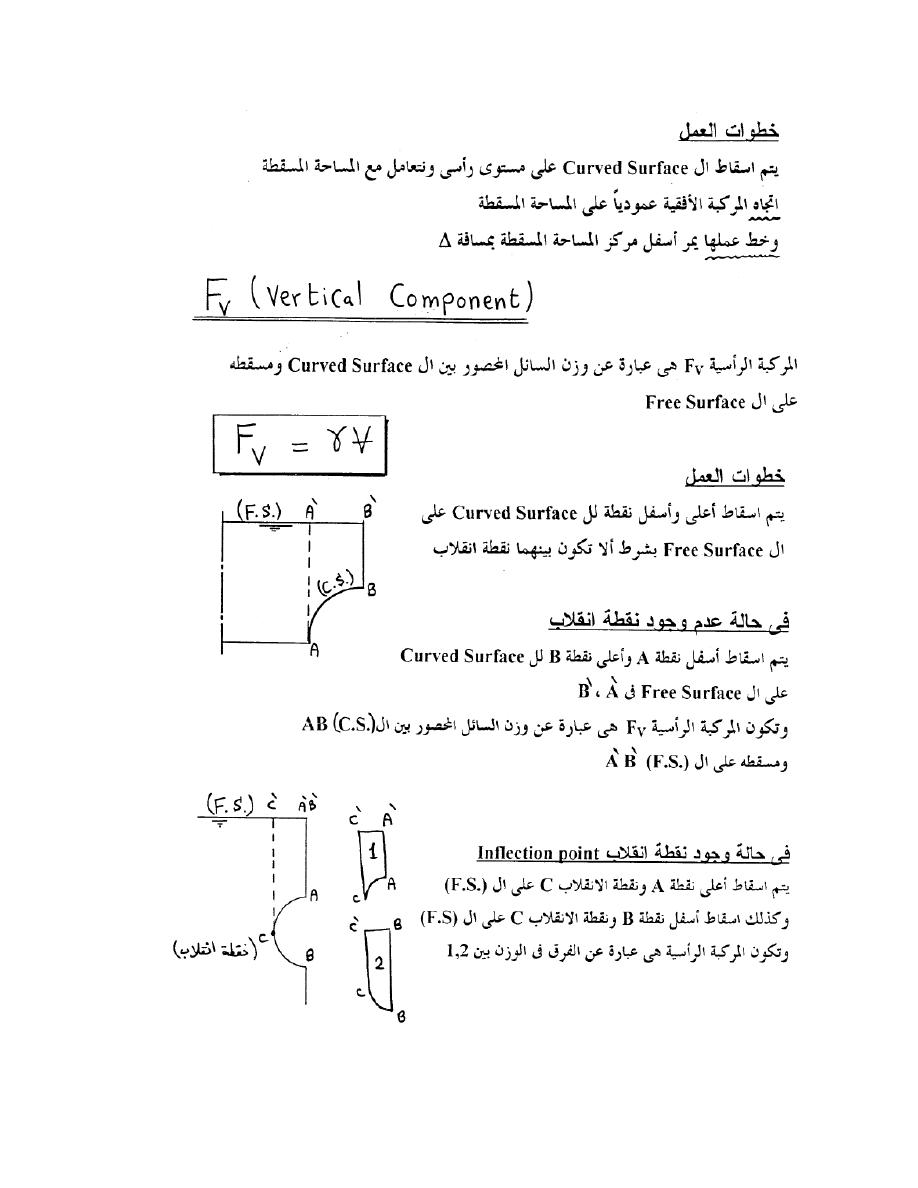
Page 33
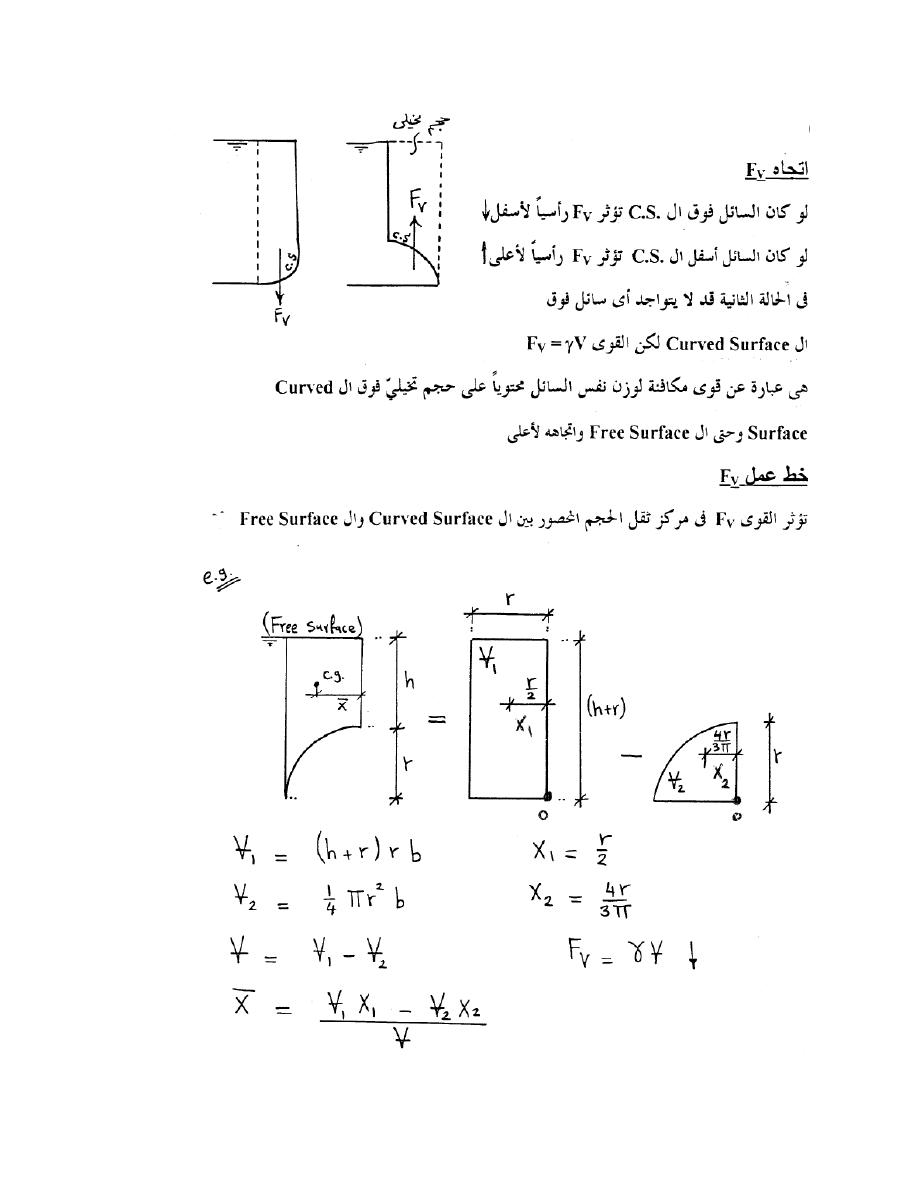
Page 34
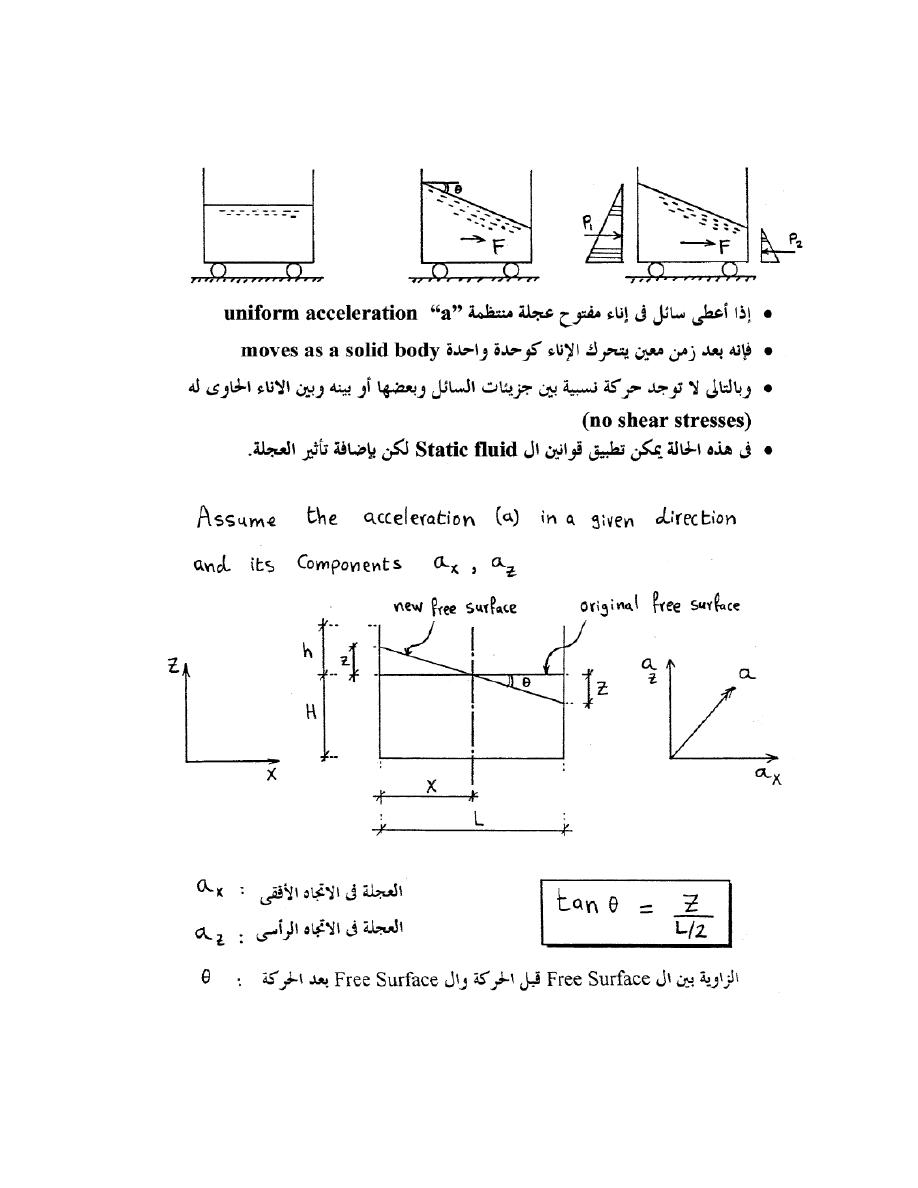
Page 35
Fluid Masses subjected to Linear Acceleration
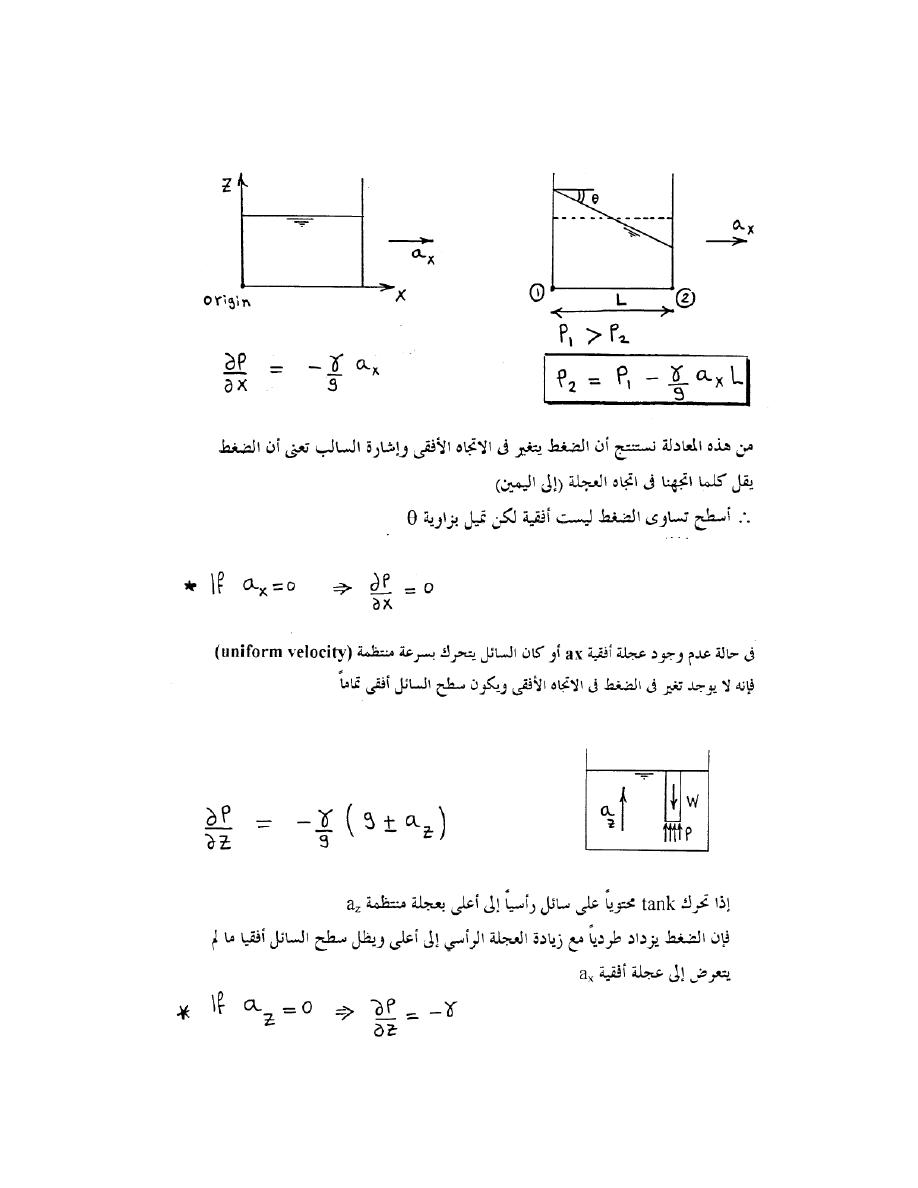
Page 36
1. Horizontal acceleration
2. Vertical acceleration
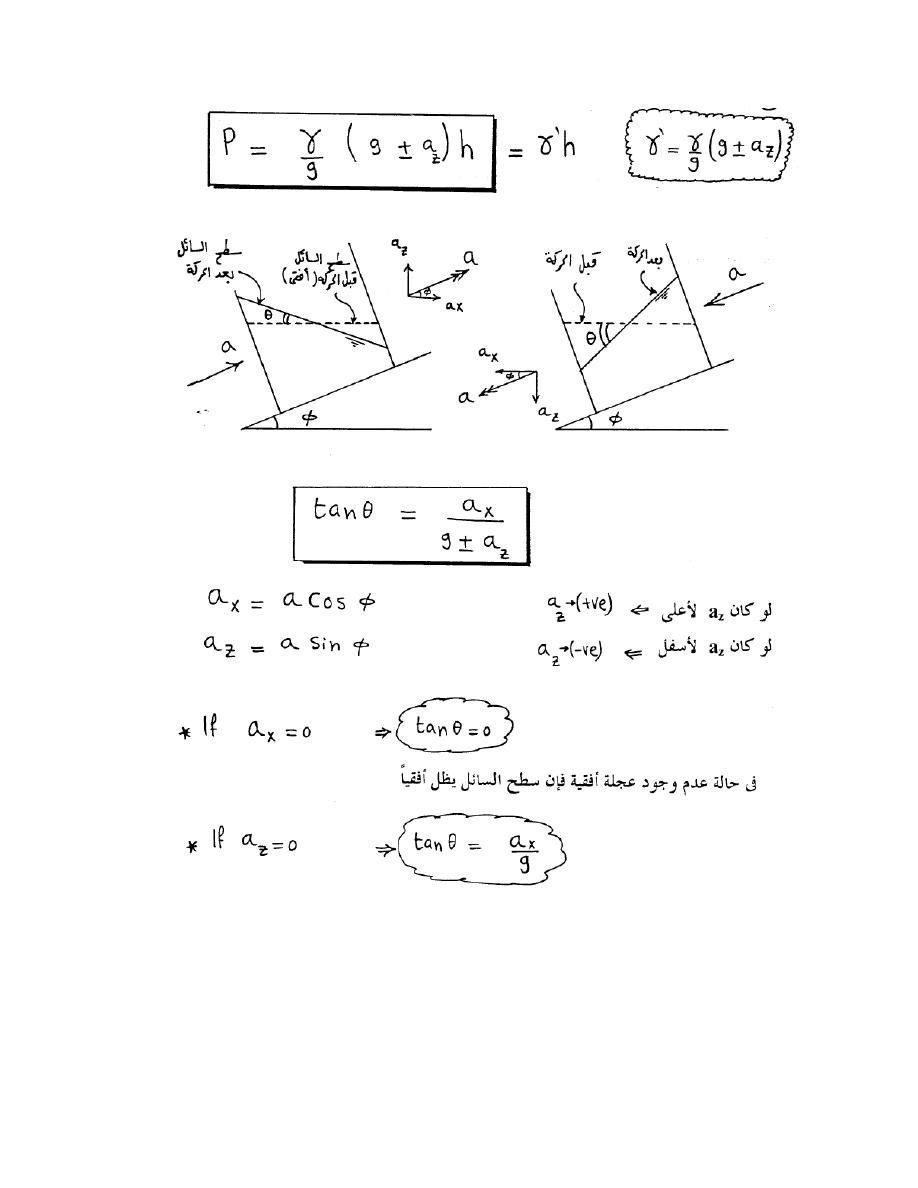
Page 37
3. Combined horizontal and vertical acceleration
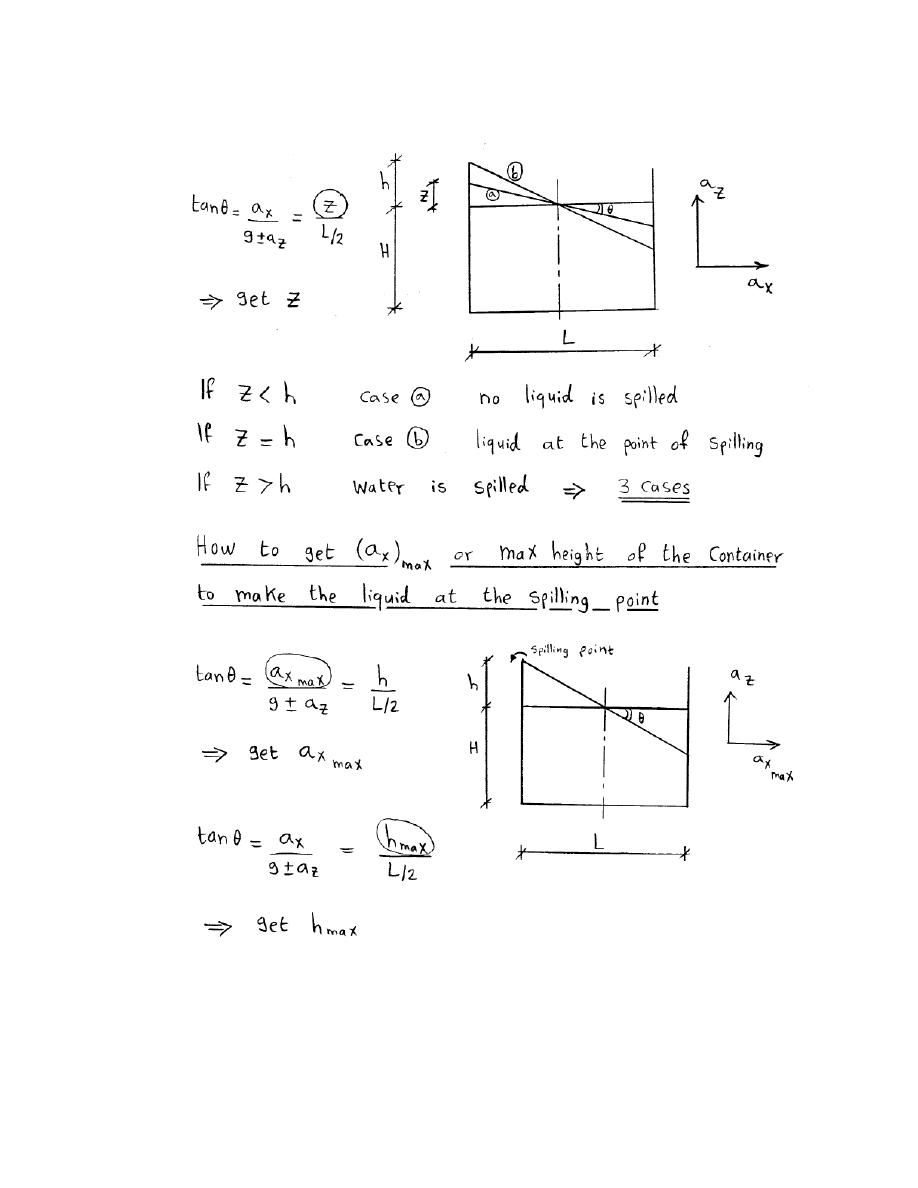
Page 38
How to know if the fluid will spilt
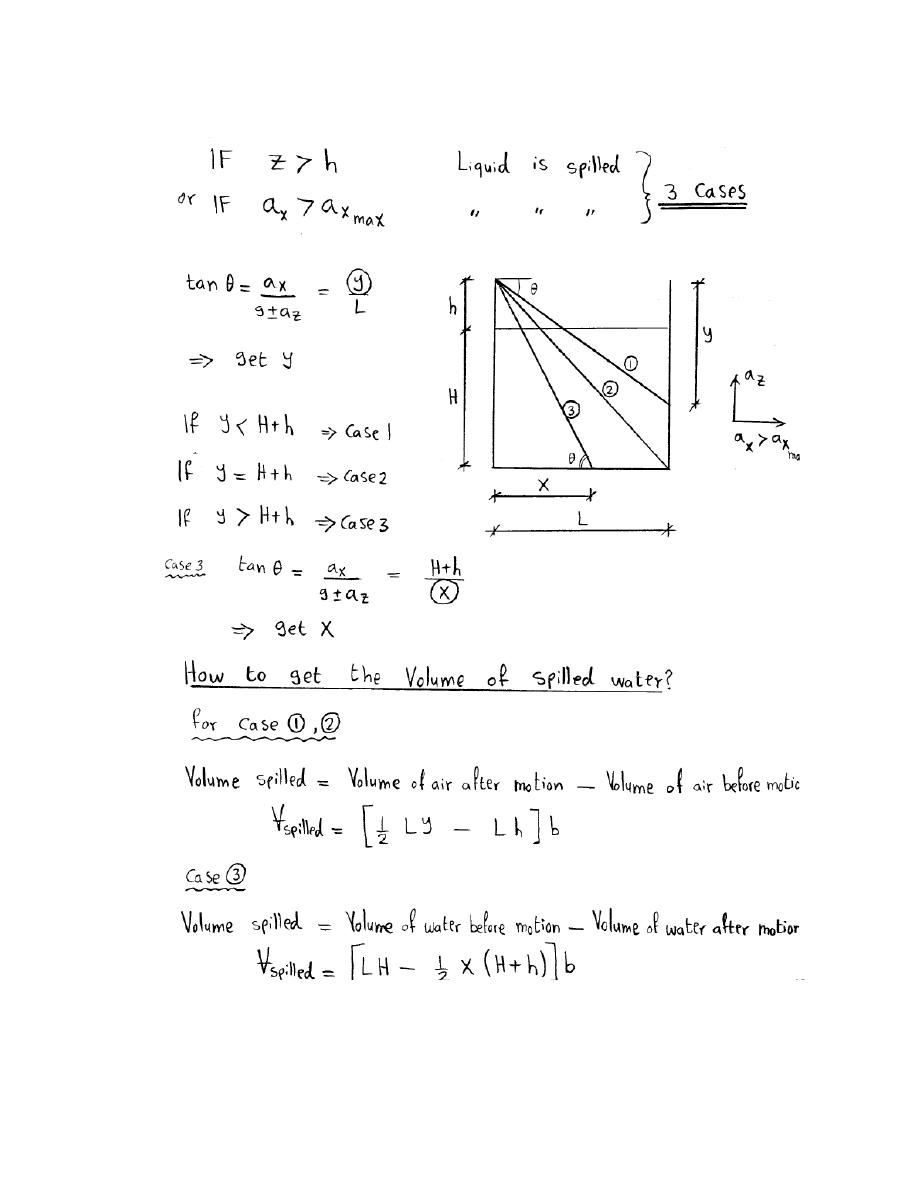
Page 39
When Fluid is spilled?
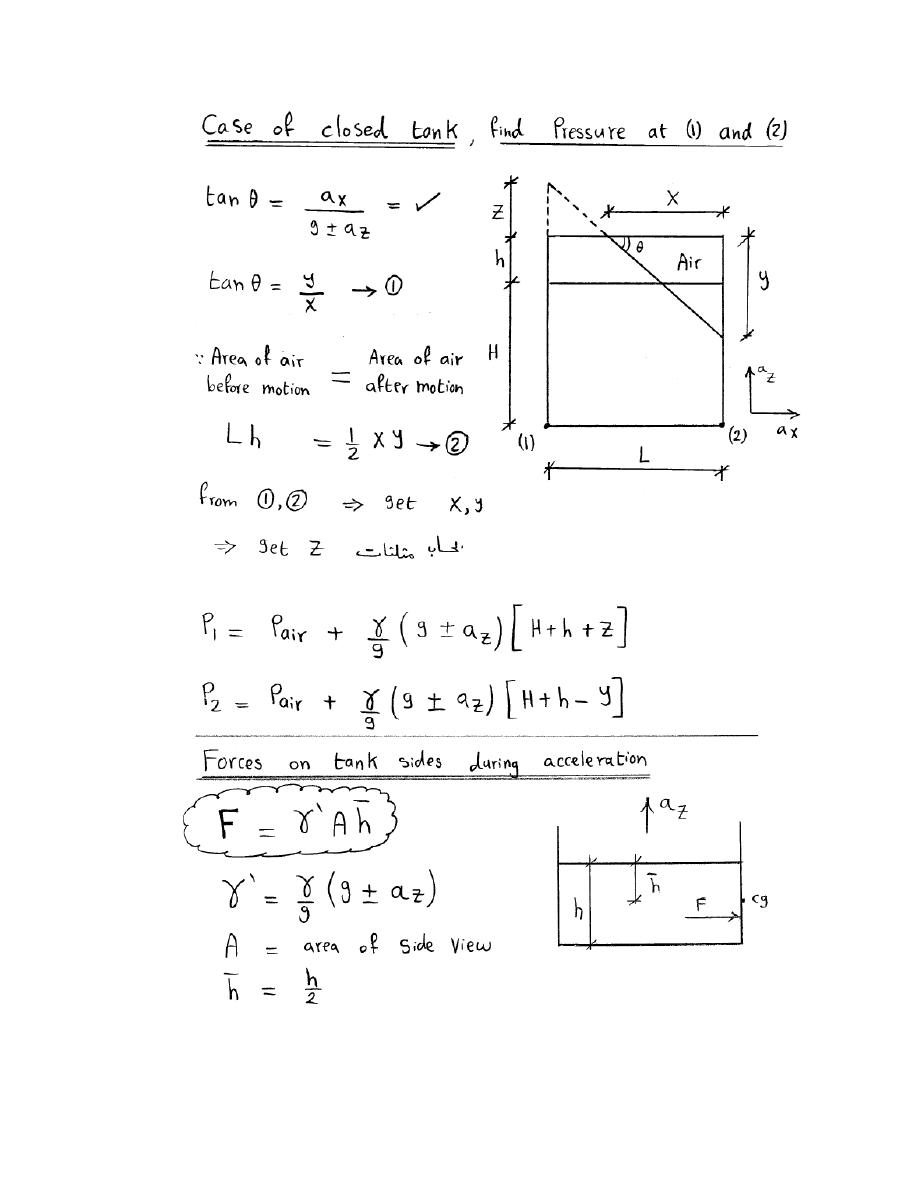
Page 40
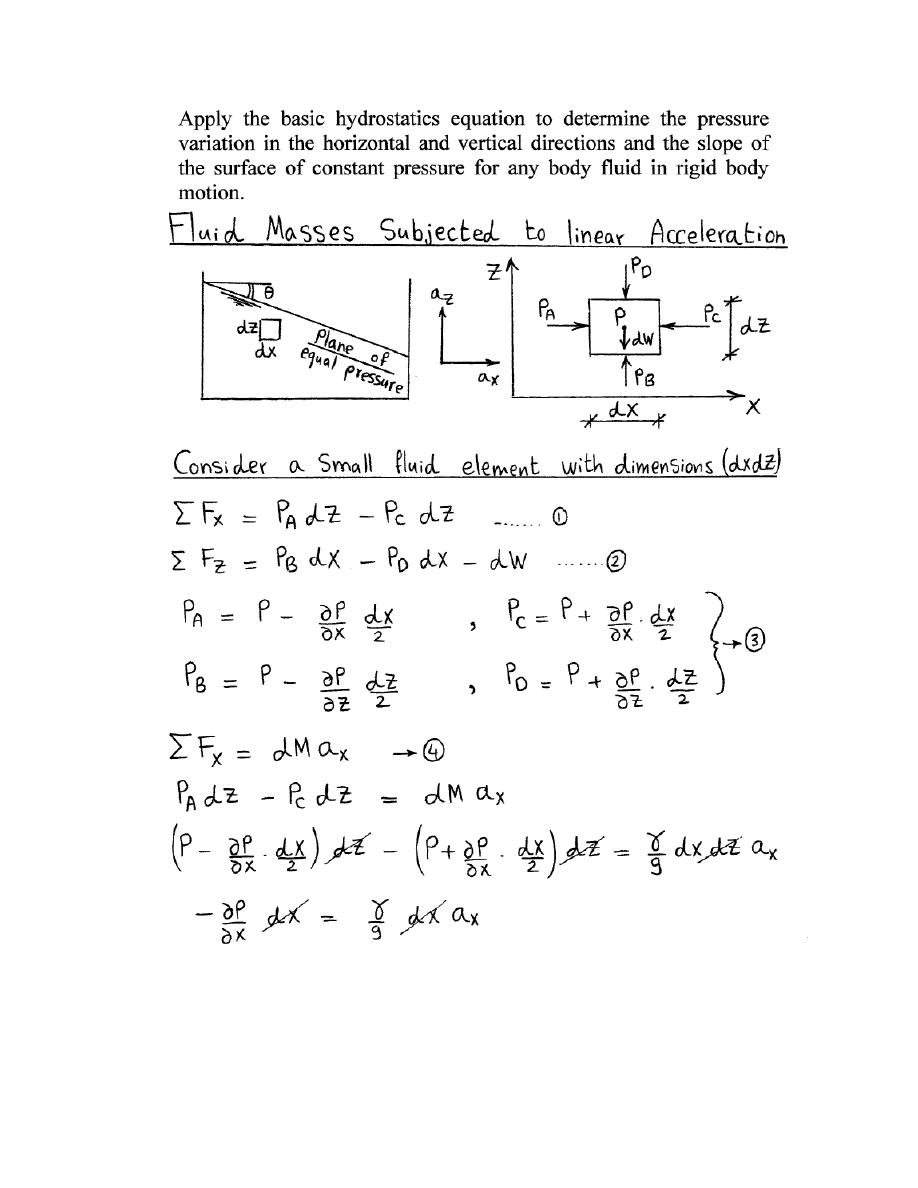
Page 41
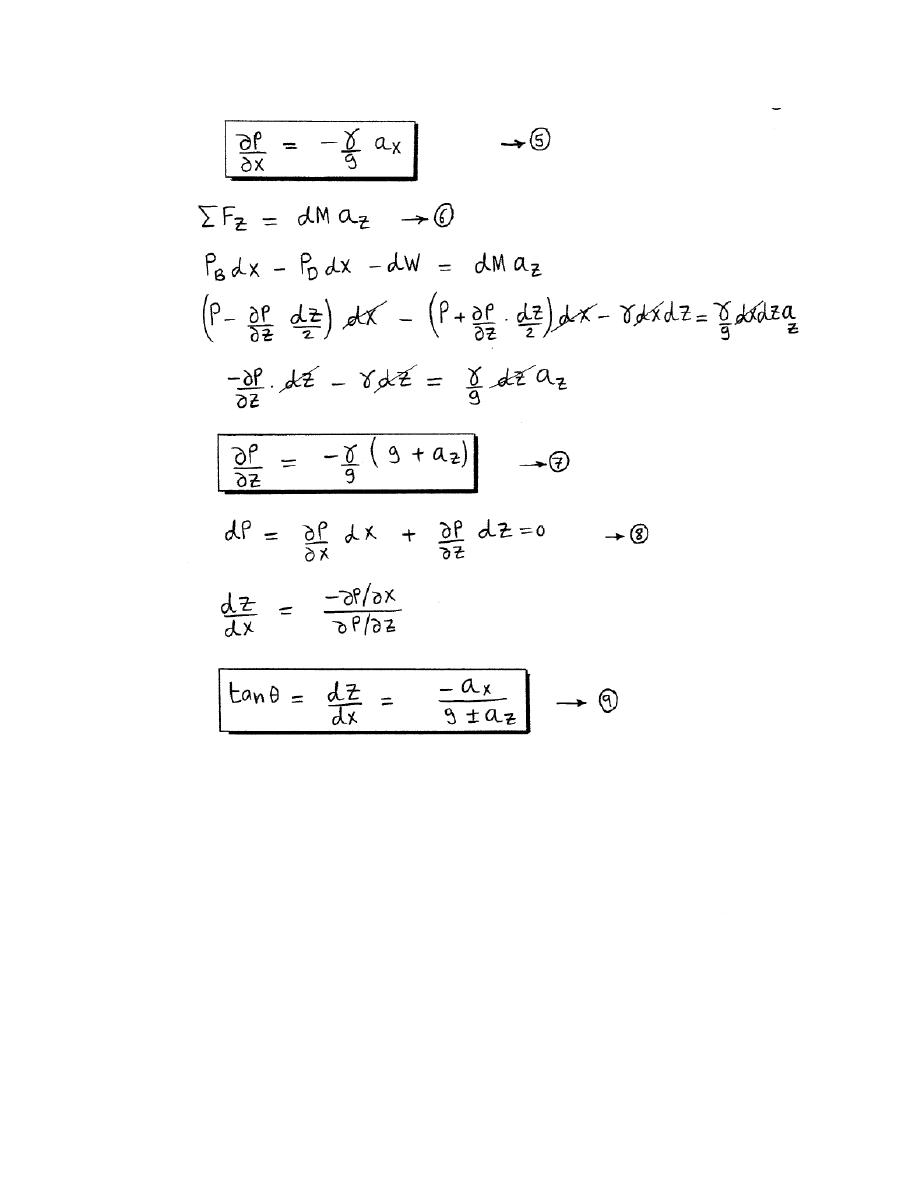
Page 42
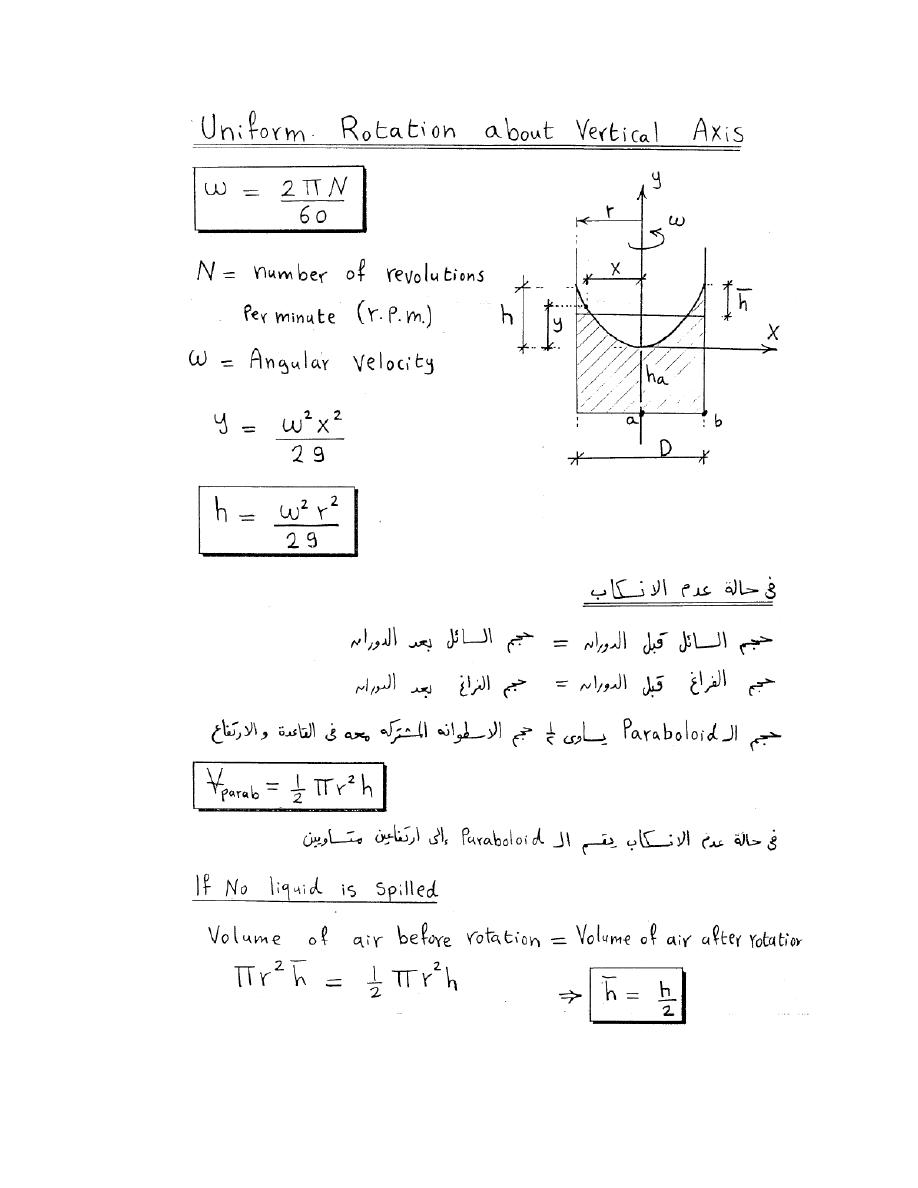
Page 43
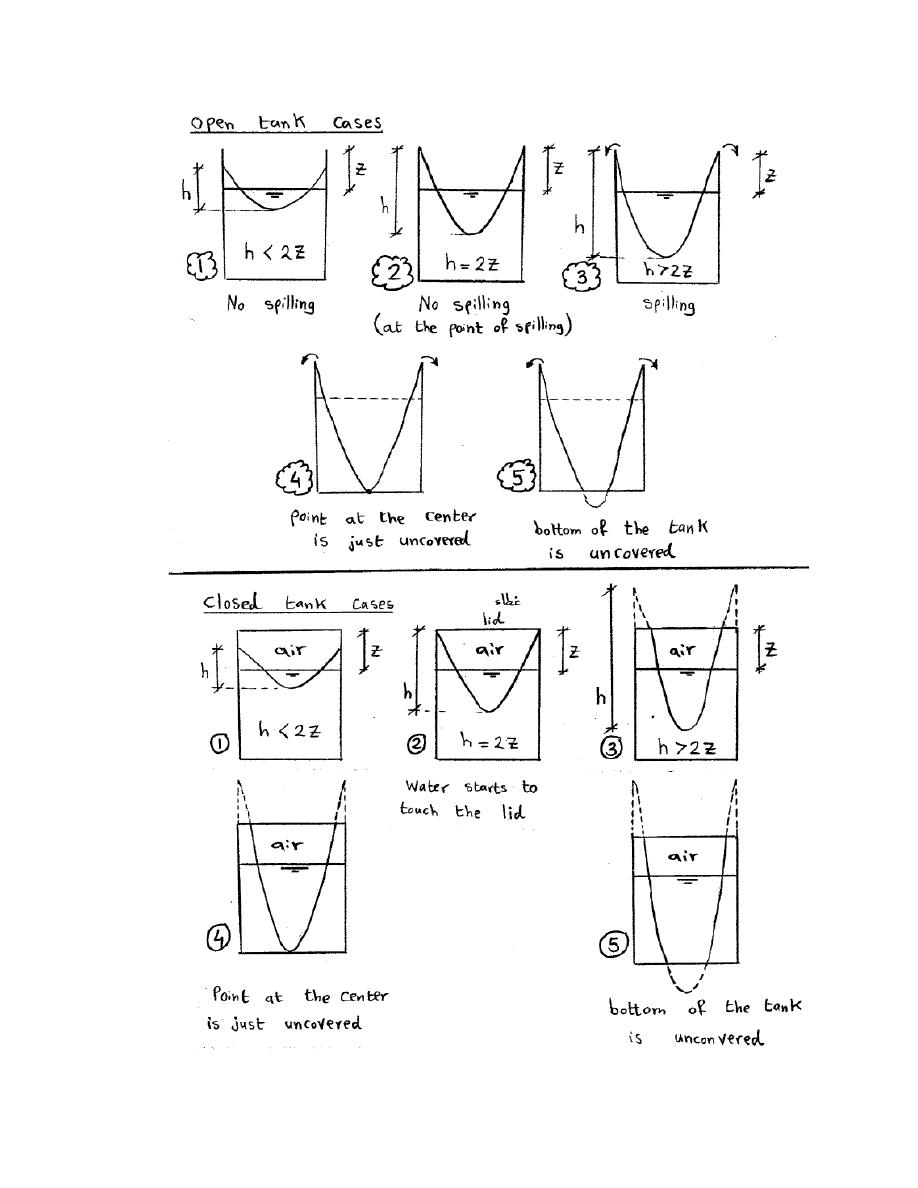
Page 44
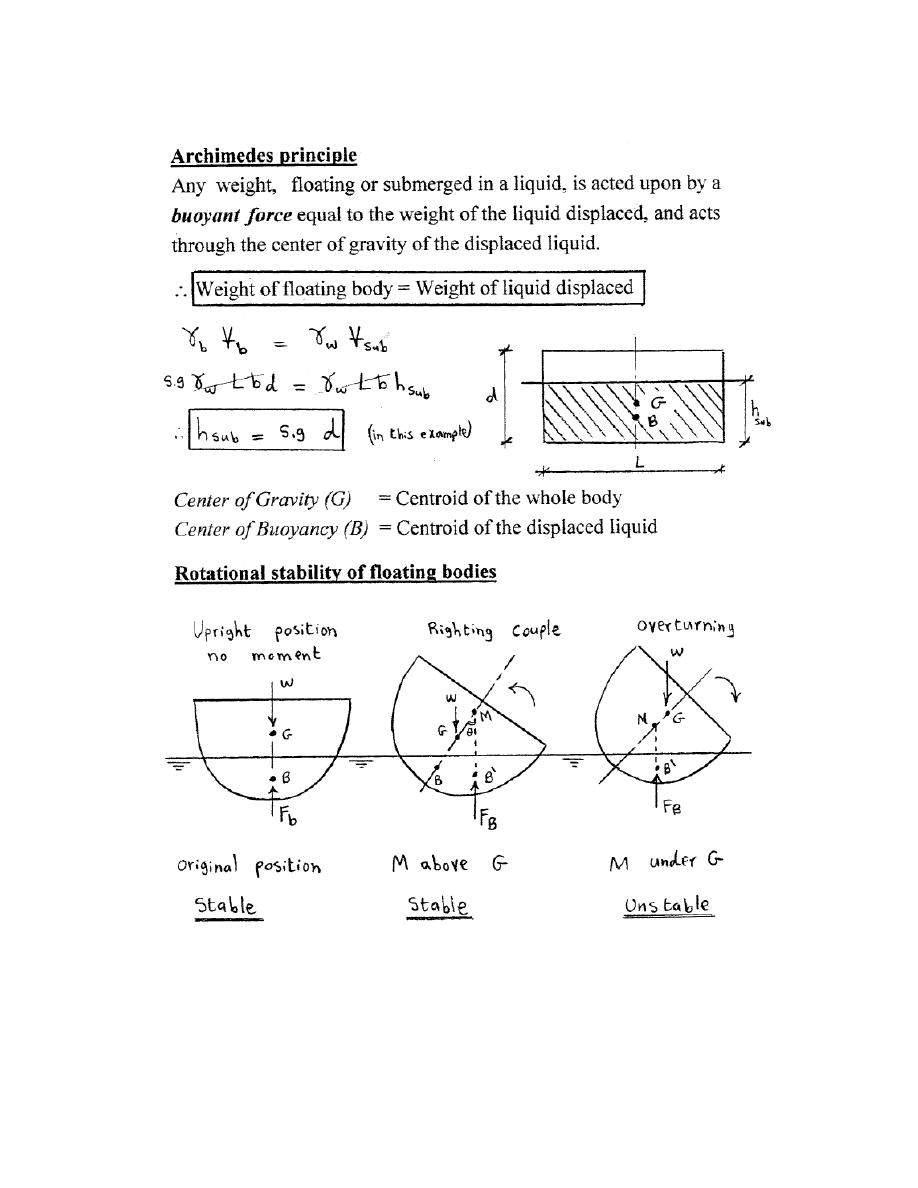
Page 45
Buoyancy and floating
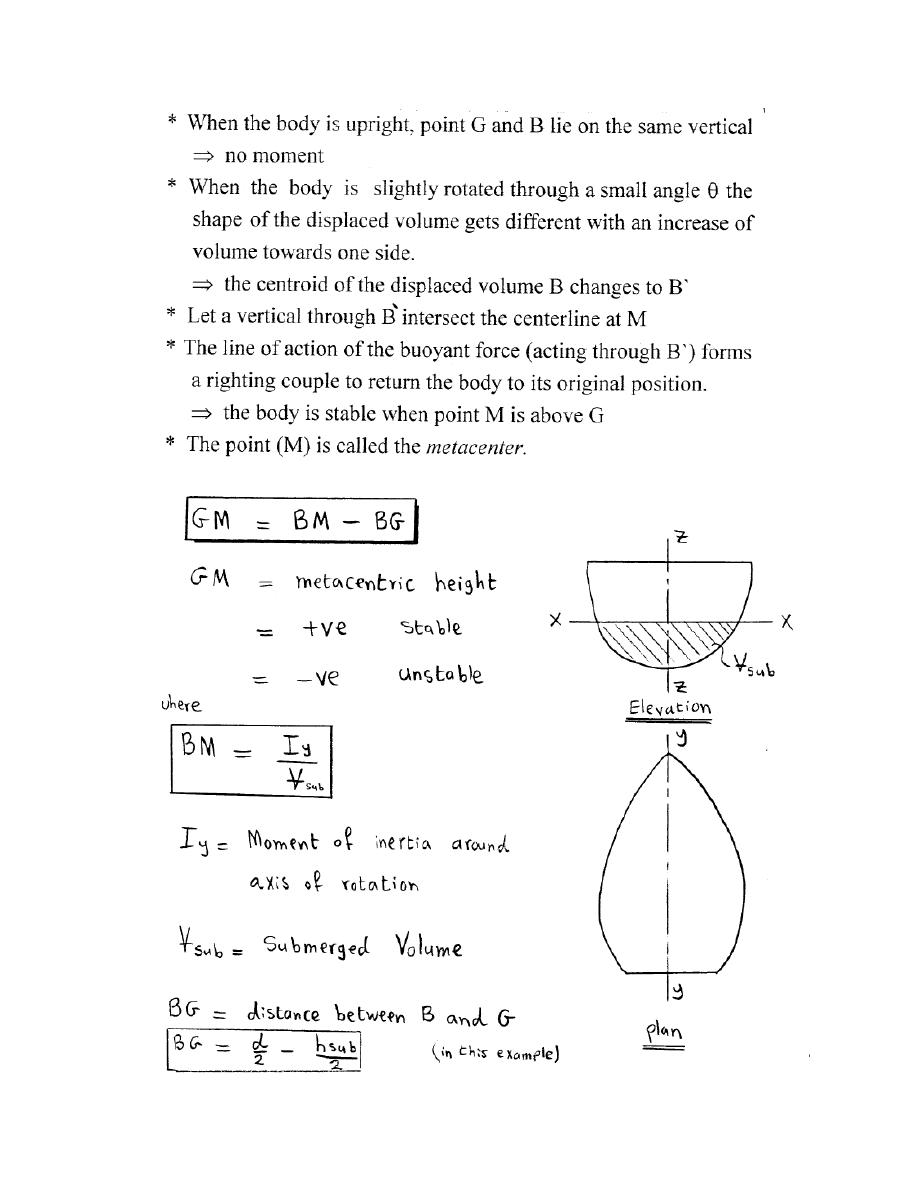
Page 46
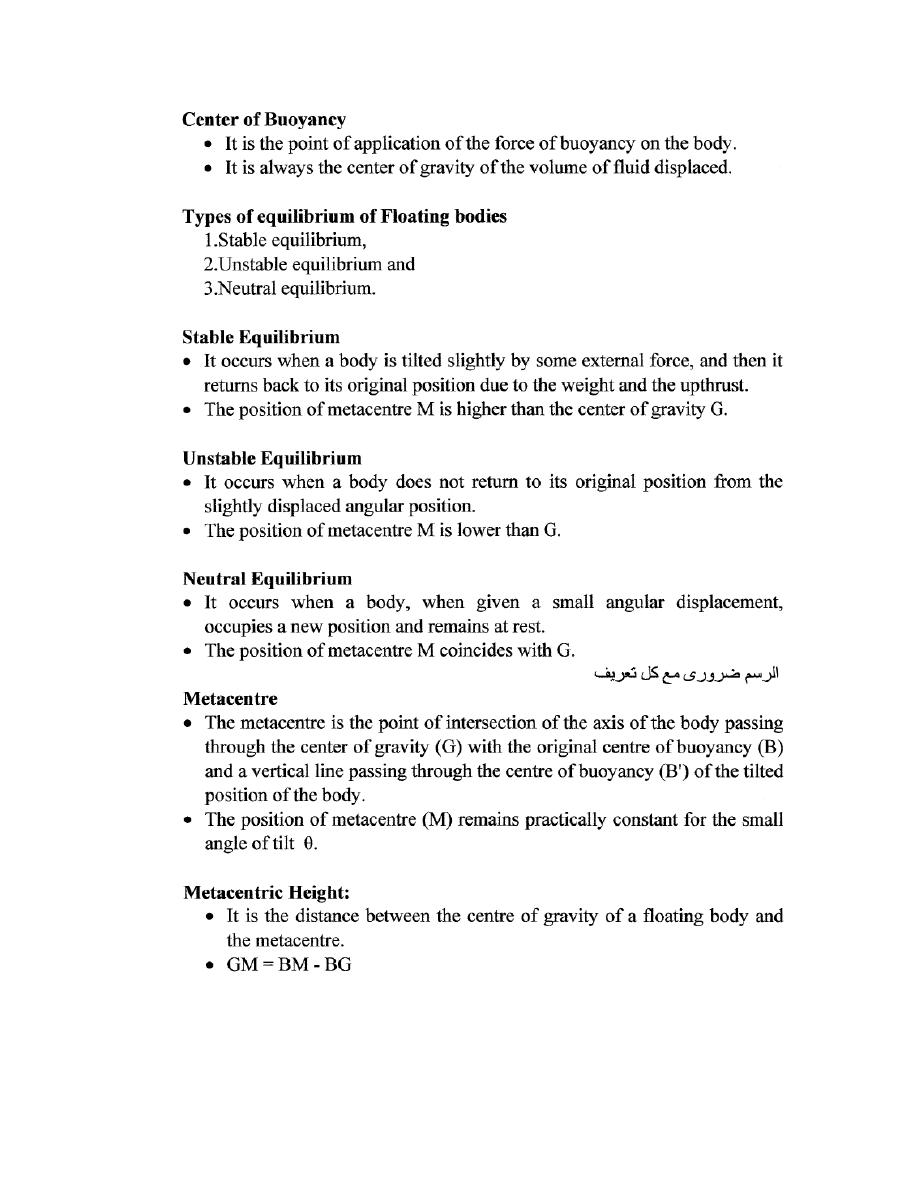
Page 47

Page 48
Fundamental of fluid flow
